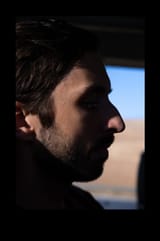Learning to Find Quiet in Excess: NYC Contact Sheets May–August

New York is excess. Density. Layers of light, people, buildings moving so fast you wonder how it doesn't collapse into itself. Coming from Chicago—a city with familiar rhythm—I spent my first three months here disoriented by the sheer volume of everything. The streets don't pause. The towering architecture above is felt, but recedes out of view as people shuffle horizontally on the streets below. Light bounces off glass and concrete in ways that feel simultaneously chaotic and composed.
I spent May through August learning to work with the chaos rather than against it. This wasn't just about finding quieter neighborhoods or waiting for empty streets—though I discovered those too. It was about understanding that contemplative photography requires multiple approaches: finding quiet within overwhelming density, seeking out spaces designed for refuge, experimenting without clear answers, and learning from others whose vision helps sharpen your own. Above all, you have to work with what's there.
What follows isn't polished work. It's learning to see in a city that never stops. Photography, I'm discovering, is about the in-between—the fleeting moments that reveal beauty and truth if you're patient enough to witness them. These three months taught me that great work requires showing up consistently, working through discomfort, trusting the process even when you don't know what you're looking for yet, and remaining open to discovery wherever it emerges.
Initial Disorientation: Fresh Eyes Searching for Footing
Late May: Bay Ridge & Williamsburg
The Verrazzano Bridge became my entry point—literally and metaphorically. Approaching it from Bay Ridge, it's vertical presence demanded a portrait as it towered over the cityscape. But as we walked closer, the bridge broadened over the New York Harbor, insisting on horizontal framing. That tension—between context and subject—became a recurring theme. Context changes everything.
What struck me first about the neighborhoods wasn't how different they felt from Chicago, but how international they were. Bay Ridge reminded me of Bogota, Colombia: impatient cars, busy streets, bodegas with fresh fruit. The familiarity was grounding, but New York's visual density changed everything about how I had to see. In Chicago, there was space to breath. Here, you have to take your shot.
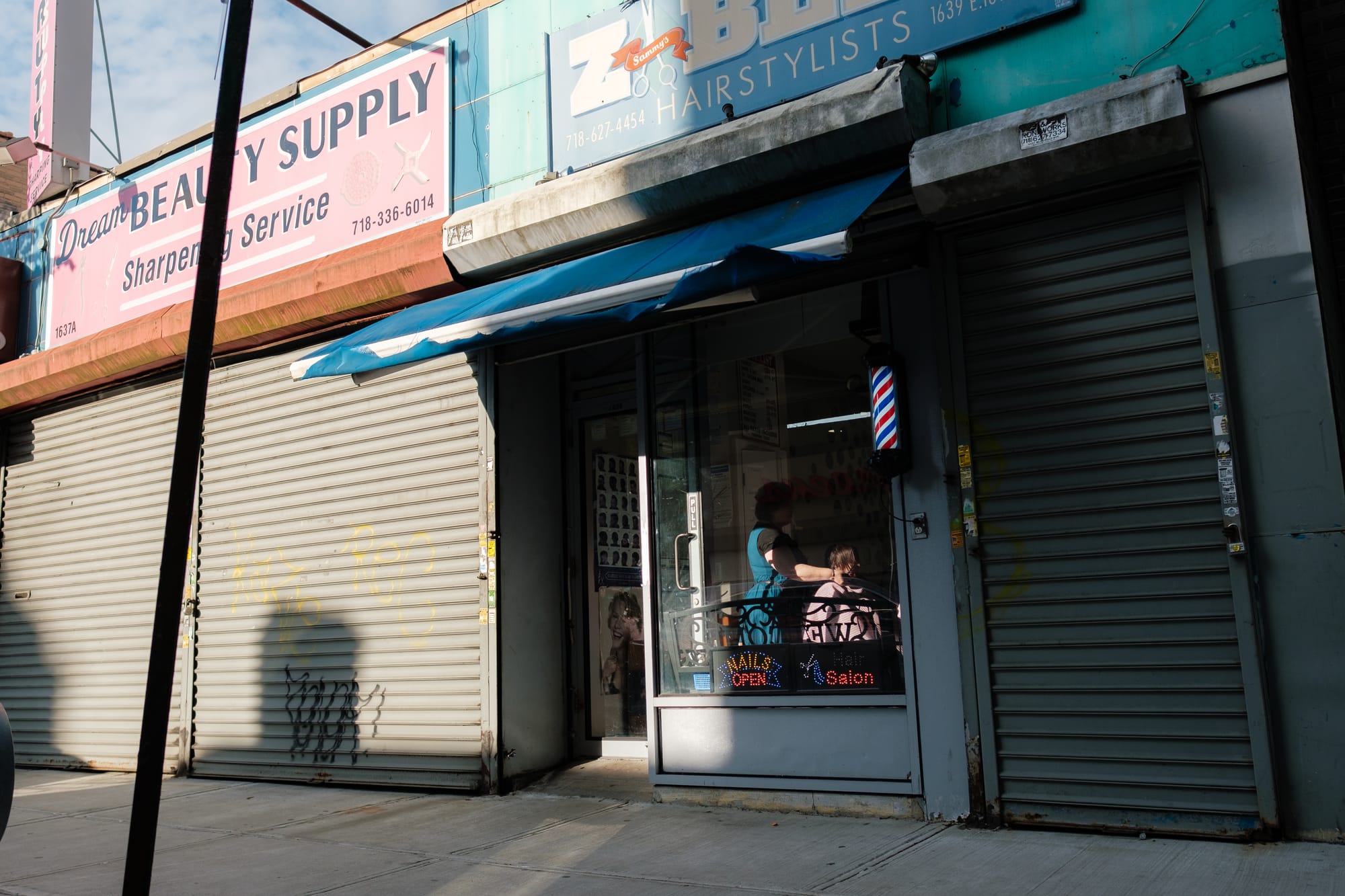
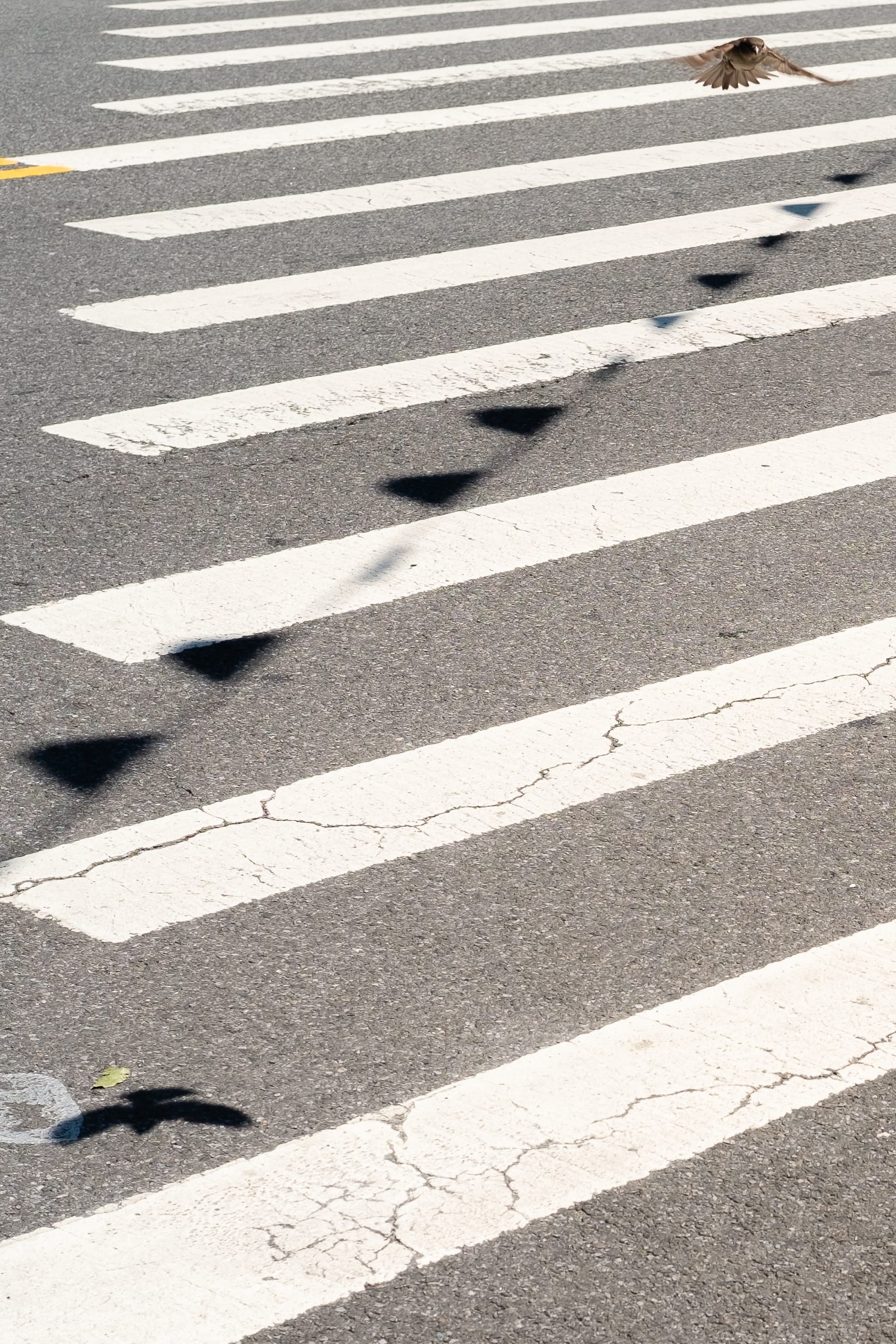
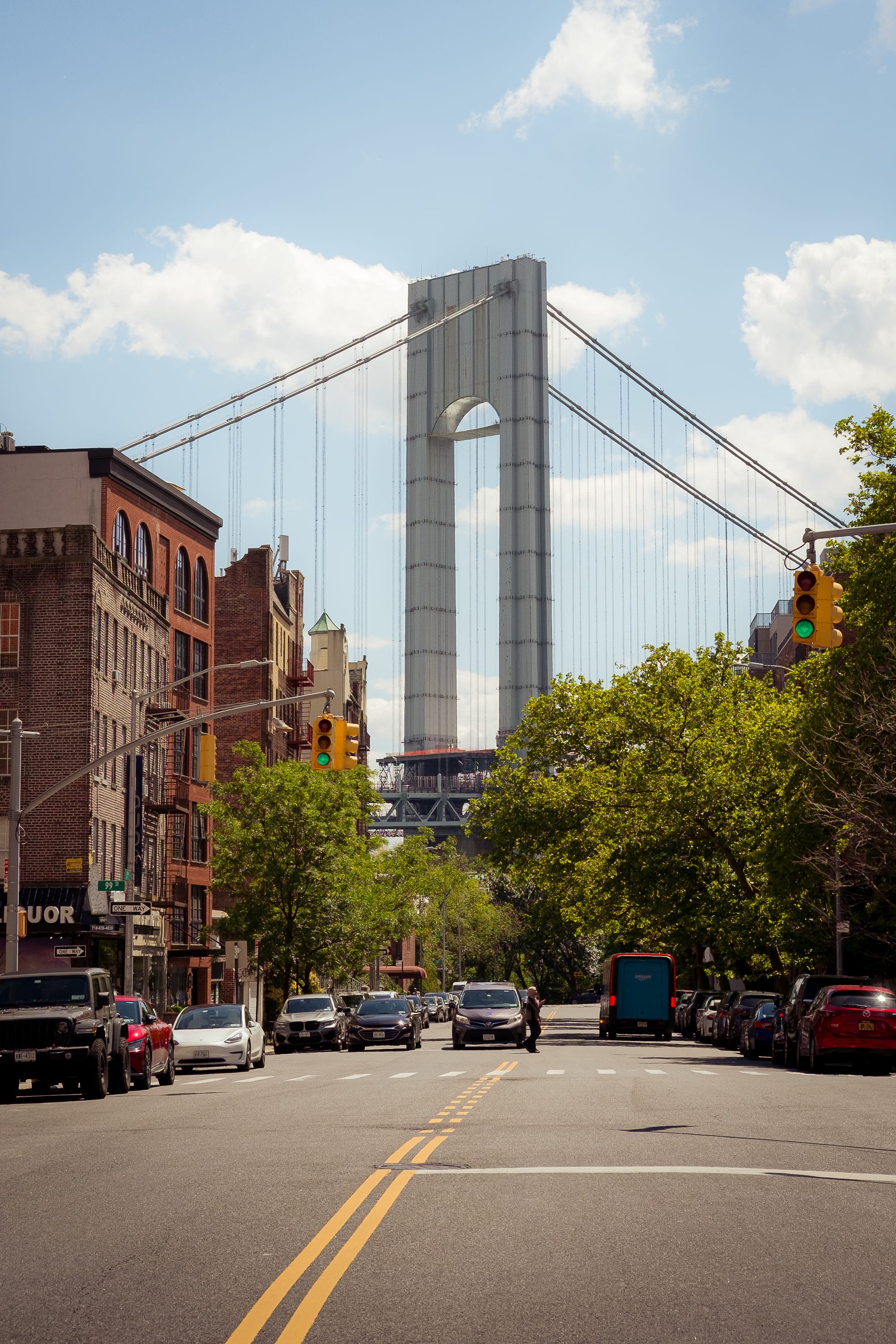



Gallery: 9 images from Bay Ridge bridge sequence
The Williamsburg set shows me beginning to adapt—pulling back, getting more contemplative. Storied urban landscapes brought to life by lone isolated subjects, or by the imperfectly placed objects they use. I was learning that in dense environments, a single figure can create all the quiet you need.
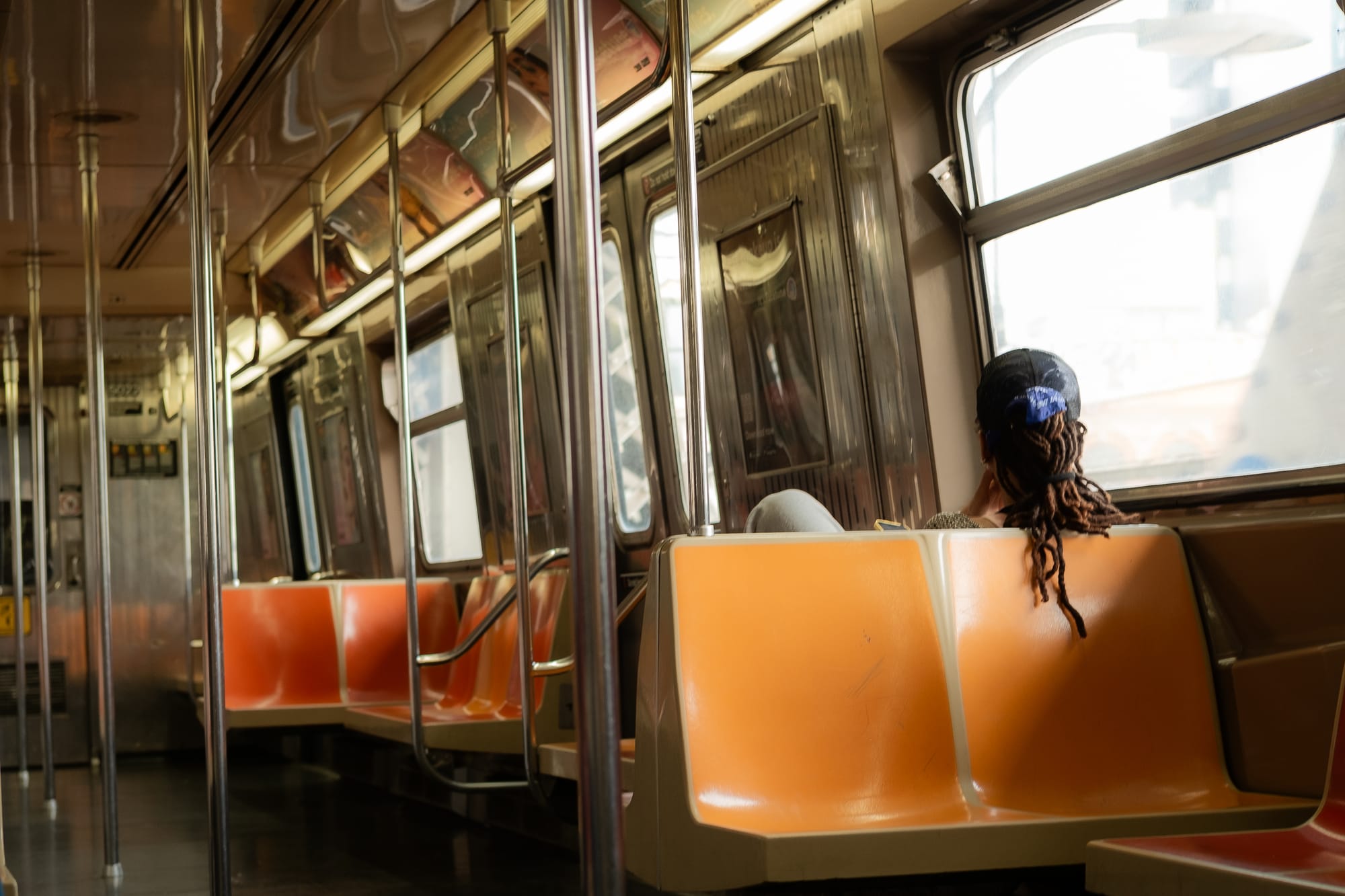

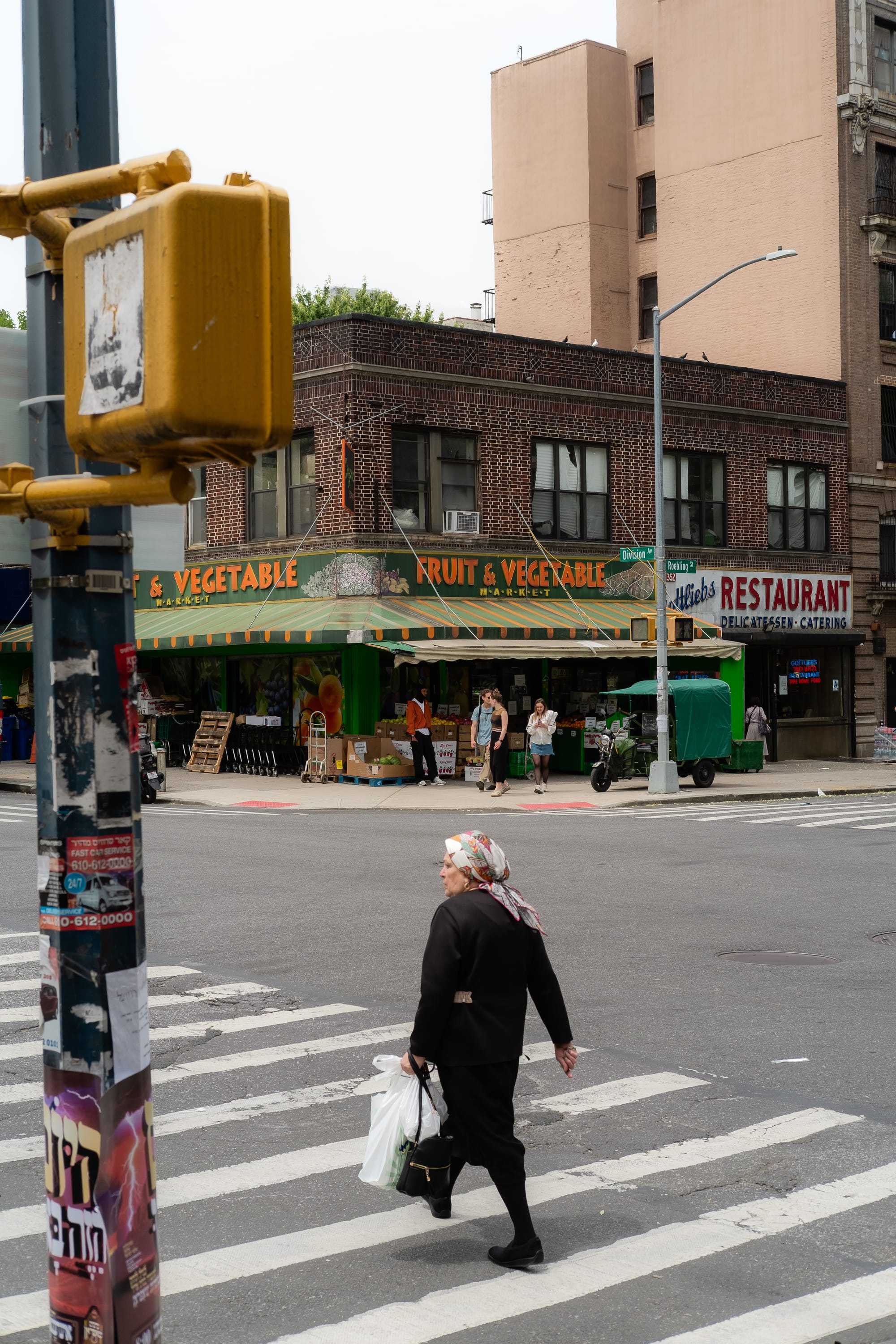
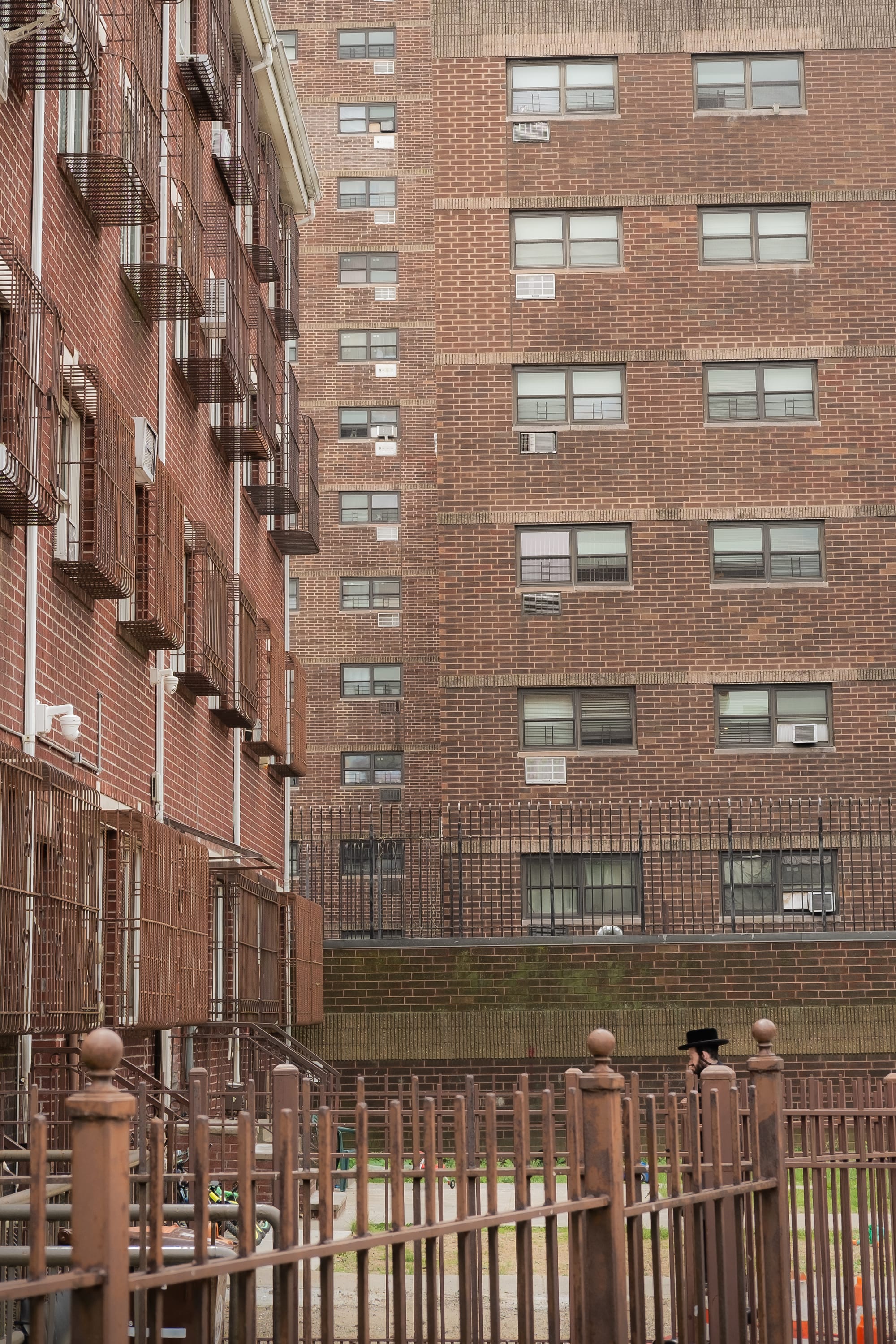
Gallery: 4 images from Williamsburg
Walking through Williamsburg after the earlier shots, something shifted. I stopped looking for people and started seeing the spaces they dwell in—open windows in uniform buildings, flowers against concrete and steel, interior architecture as a frame for light. My presence as photographer invoked theirs without needing them in frame.
These quiet moments demanded different treatment. Instead of the deep, crunchy blacks and bright whites I'd grown accustomed to from my black and white photography, I started pulling shadows down and blacks up—sometimes both up—giving scenes more continuous presence. It felt counterintuitive at first, like I was losing contrast and punch. But the softer tonal range matched what I was actually seeing: contemplative spaces, not dramatic subjects.
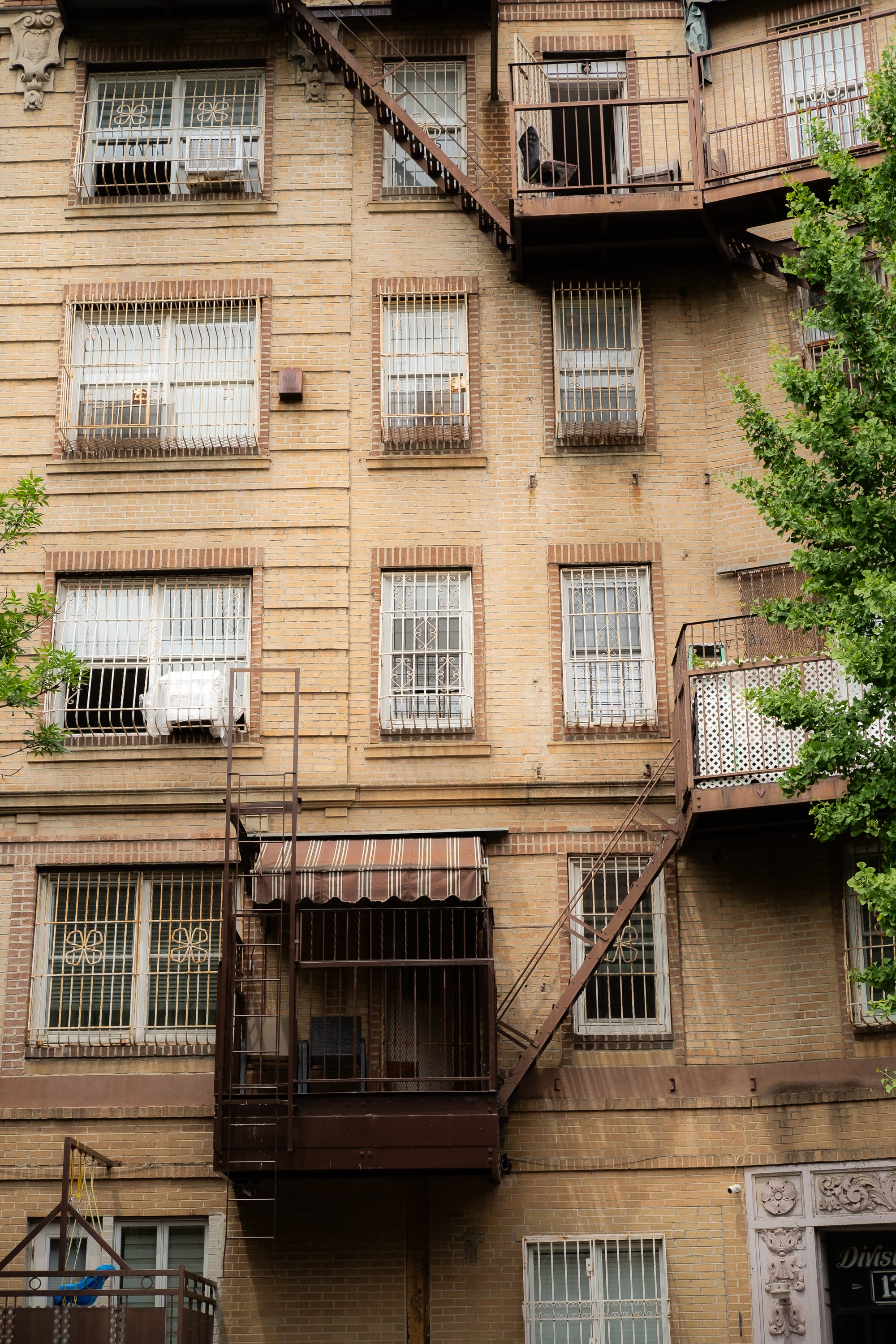
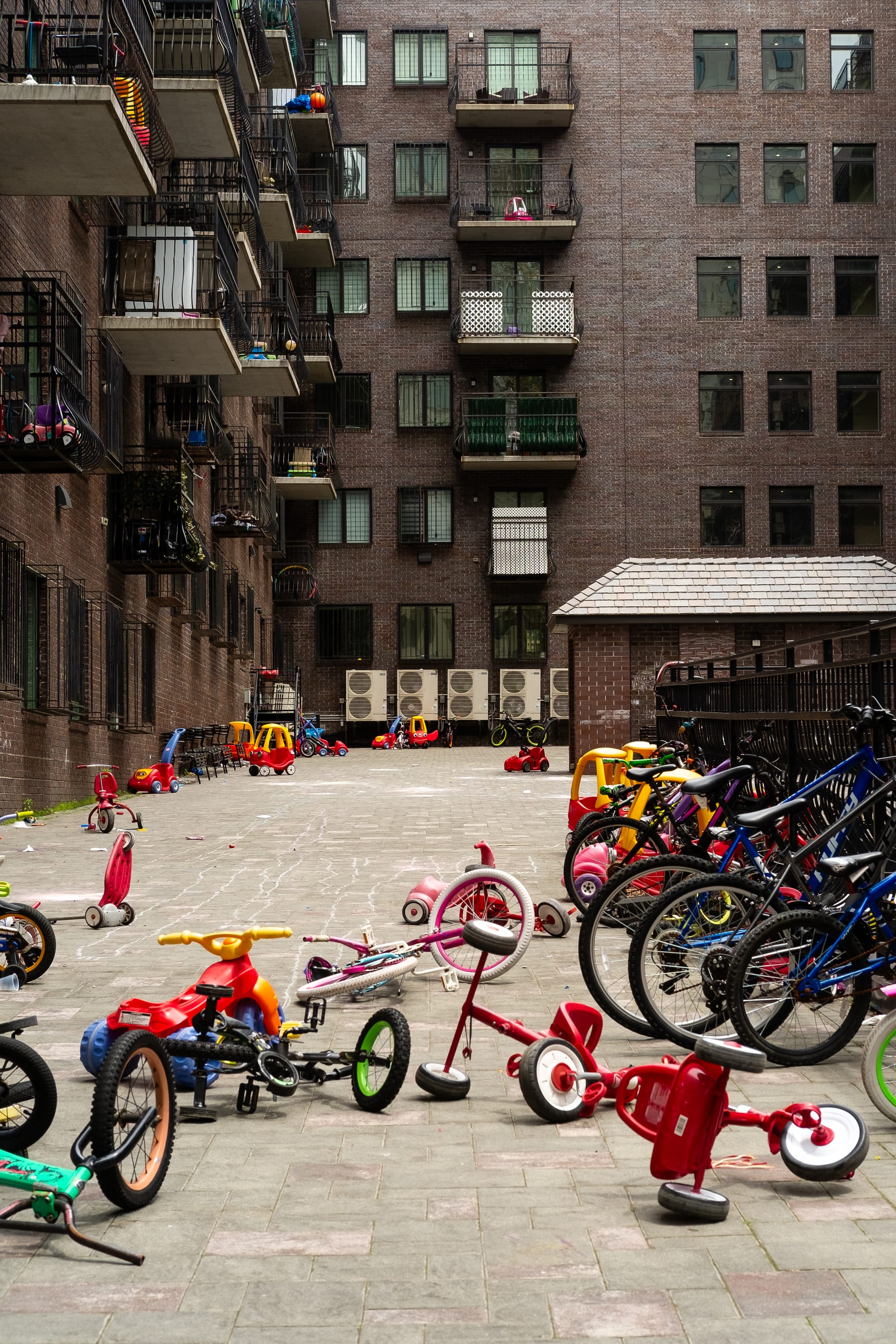



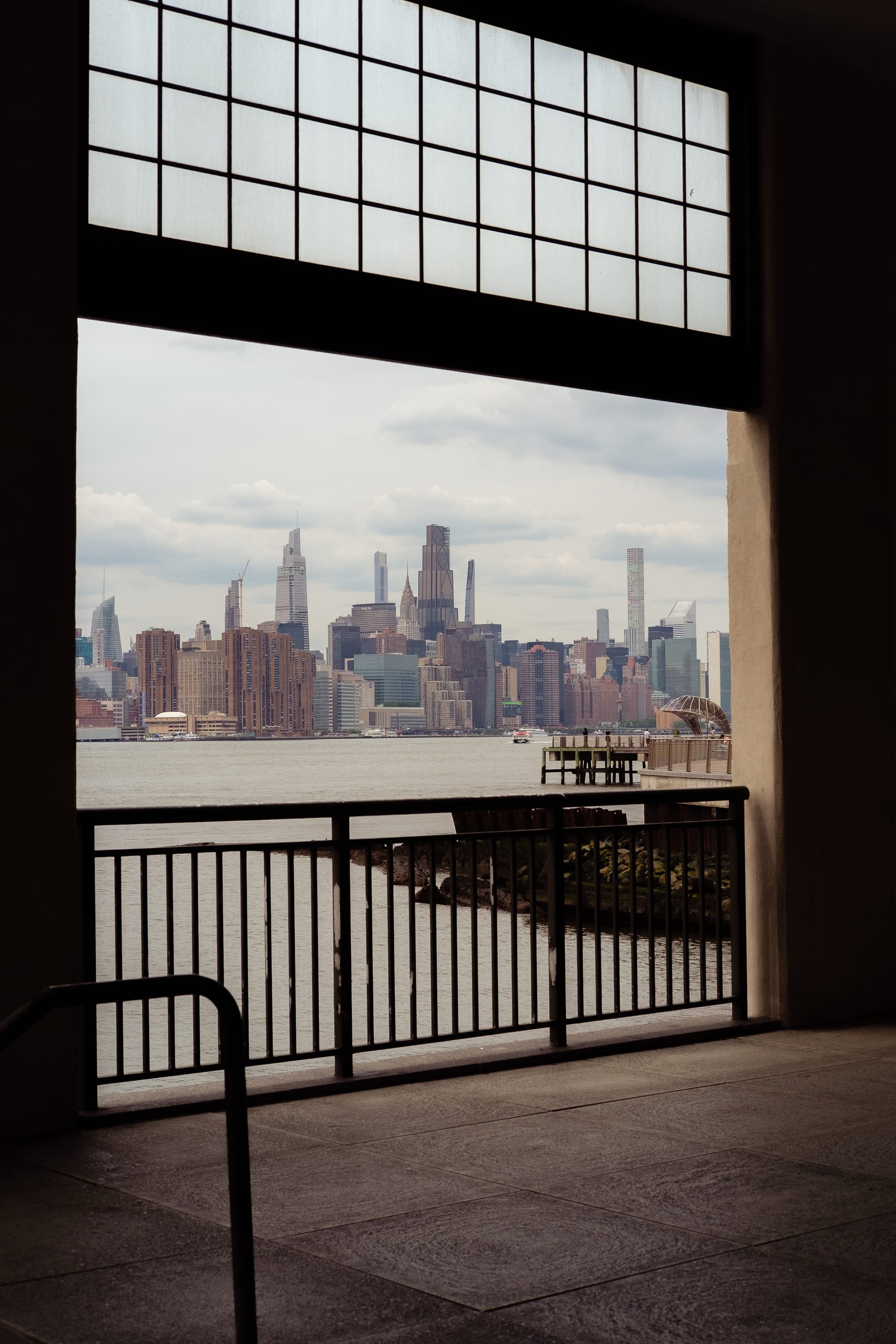
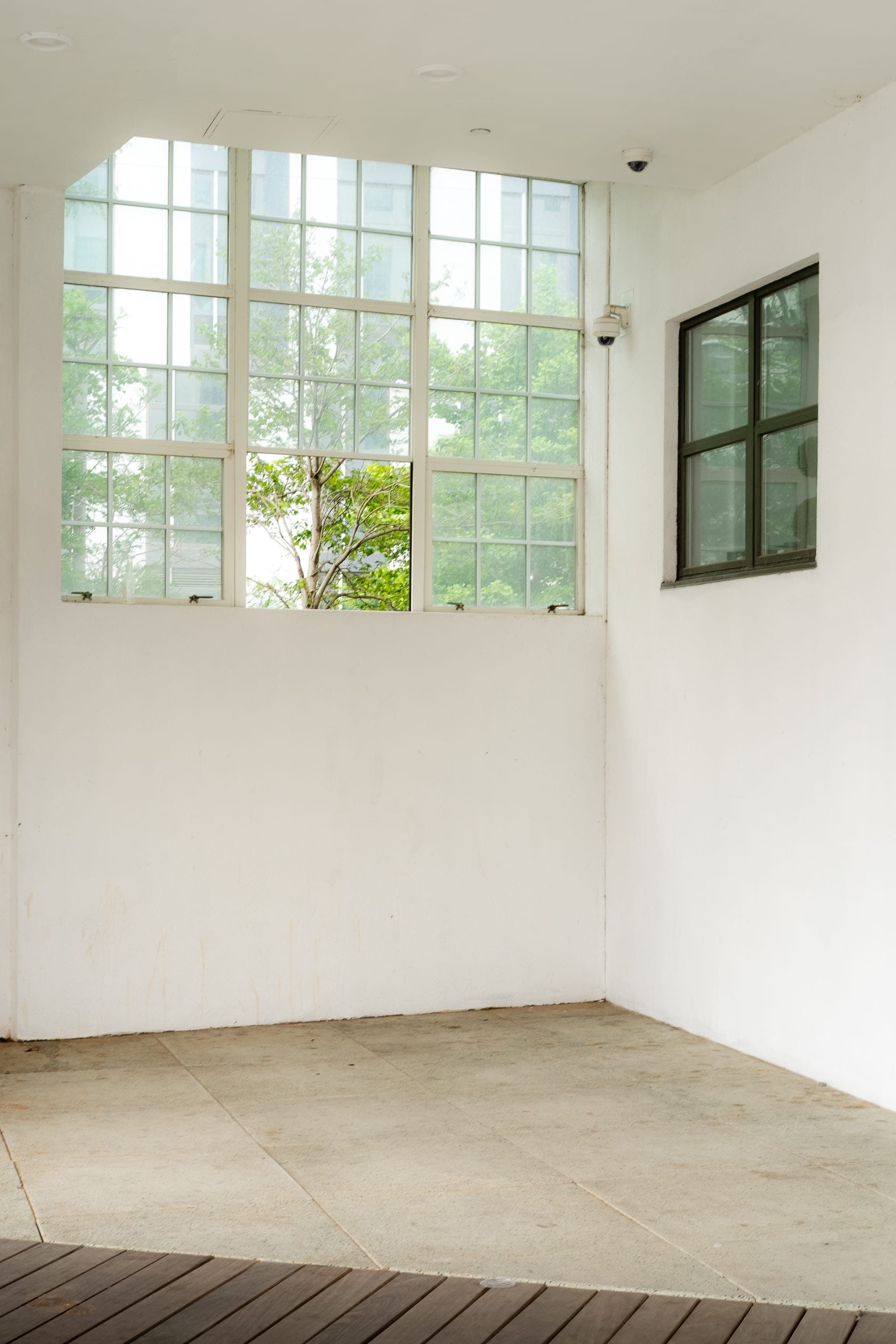
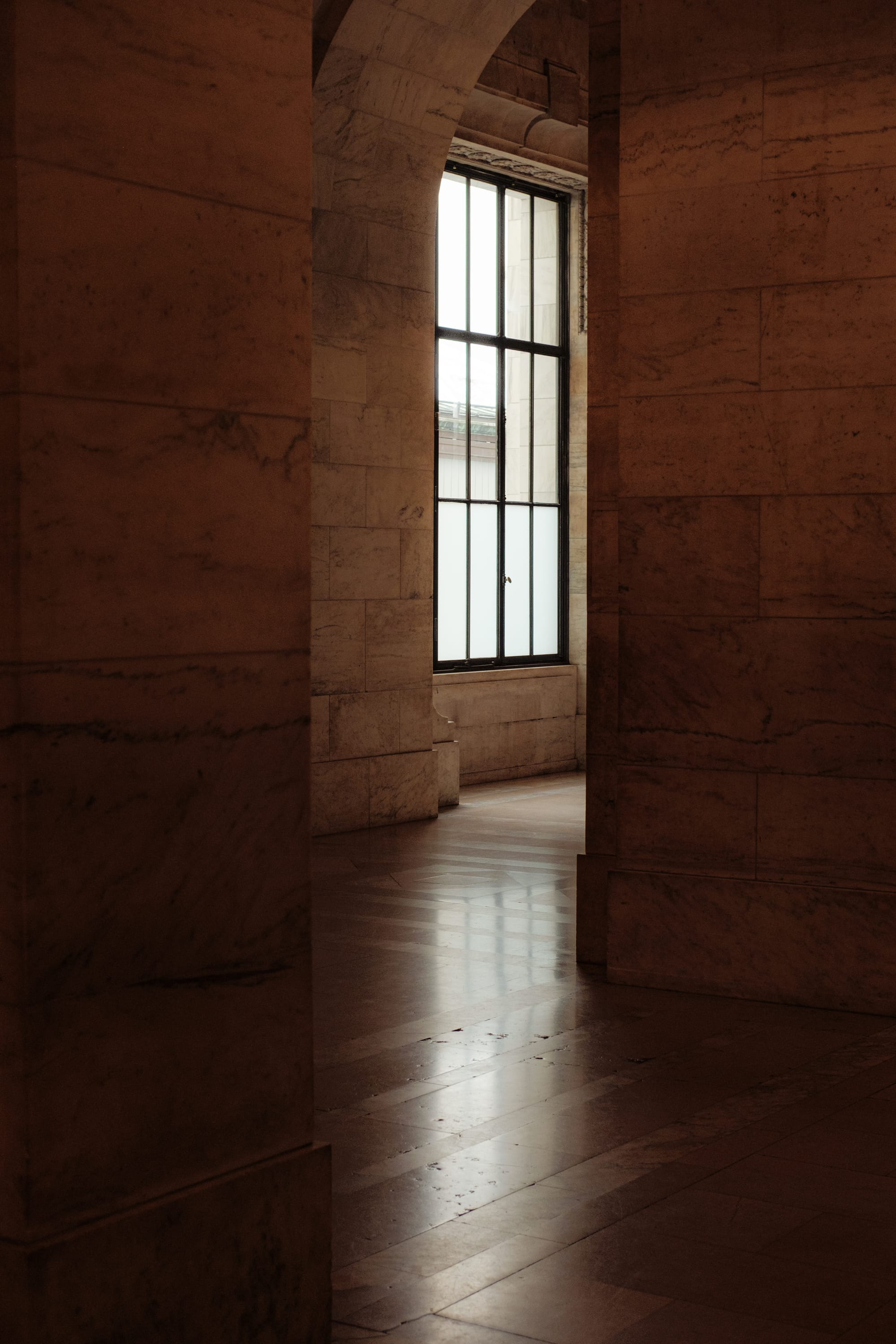
Gallery: 8 images from Williamsburg contemplative shots
Working With Tension: When Chaos Fights Fascination
Early June: Midtown South, 7th Avenue
Midtown nearly broke me at first. The pedestrian traffic fought with my instinct to admire architecture. I'd stop, take out my camera, and immediately feel exposed—like a Times Square billboard yelling for attention. The tension between street-level chaos and my fascination with the skyline made navigating 7th Avenue genuinely dangerous. I was trying to look up while thousands of people moved purposefully around me.
The first photos in this set capture that discomfort. I'm fighting the environment, trying to isolate architecture while the street demands attention. But the last few images show a shift: I started working with the tension instead of against it. What if the chaos below wasn't a distraction but part of the composition? What if the frame could hold both the structure above and the suggested presence of activity below?
This is when I began understanding suggested subjects differently. In Chicago, I used partial elements to create depth. In New York, I needed them to manage overwhelming density. You can't show everything, so you suggest it—the corner of a building, the blur of movement, yellow umbrellas and the implication of crowds. The viewer's mind completes what the frame intentionally excludes. The constraint becomes the technique.
The constraint becomes the technique.
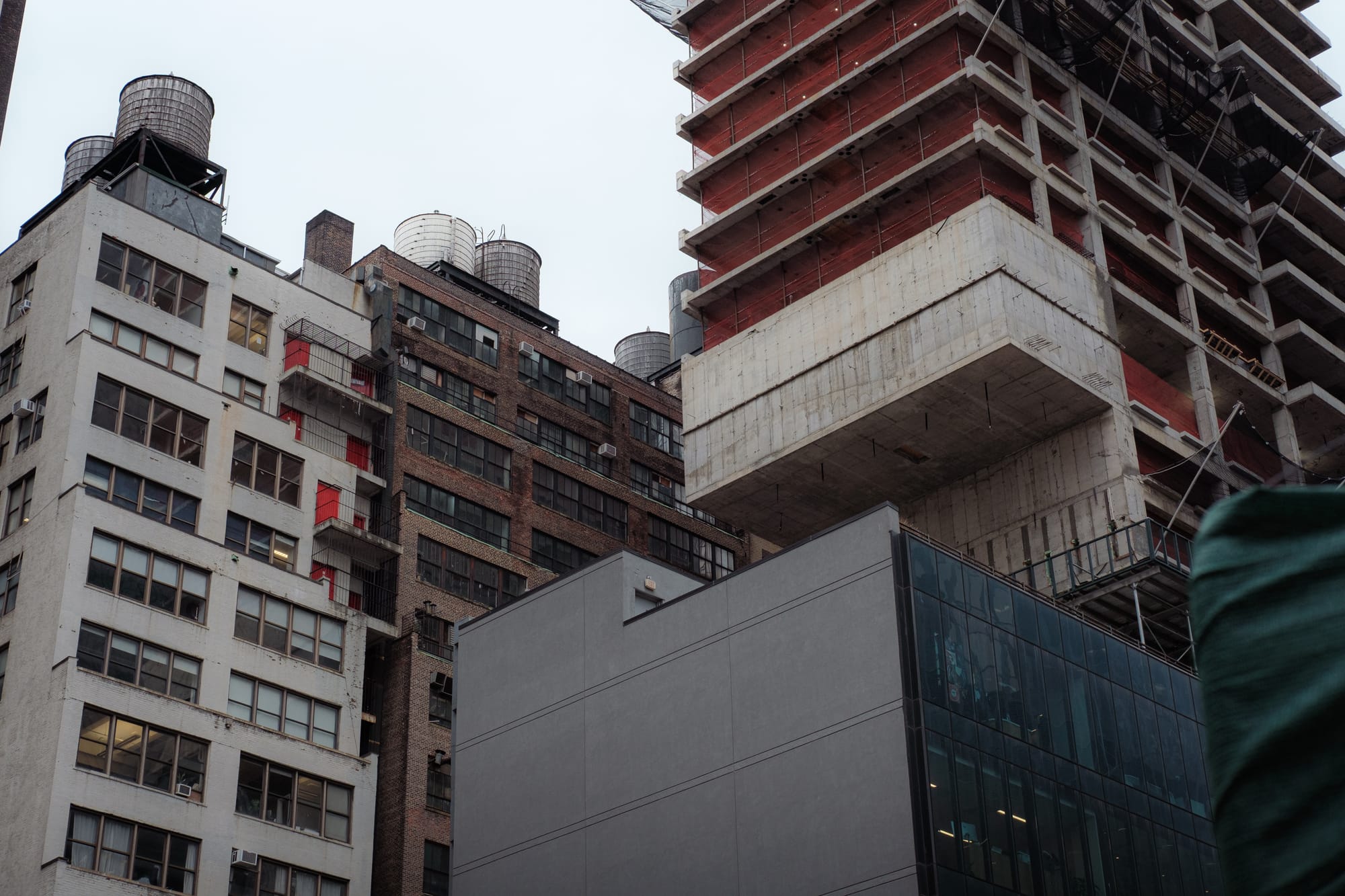

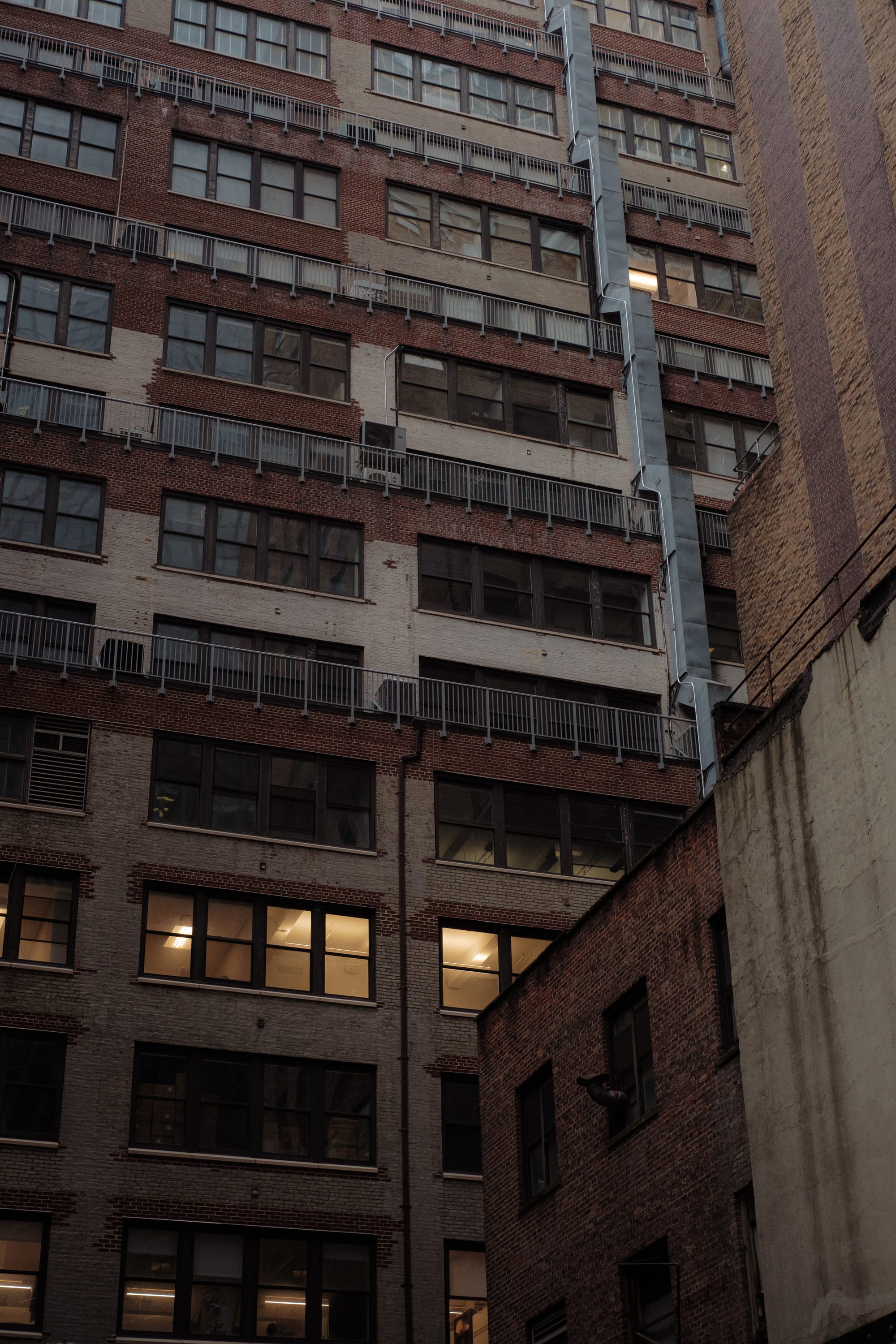
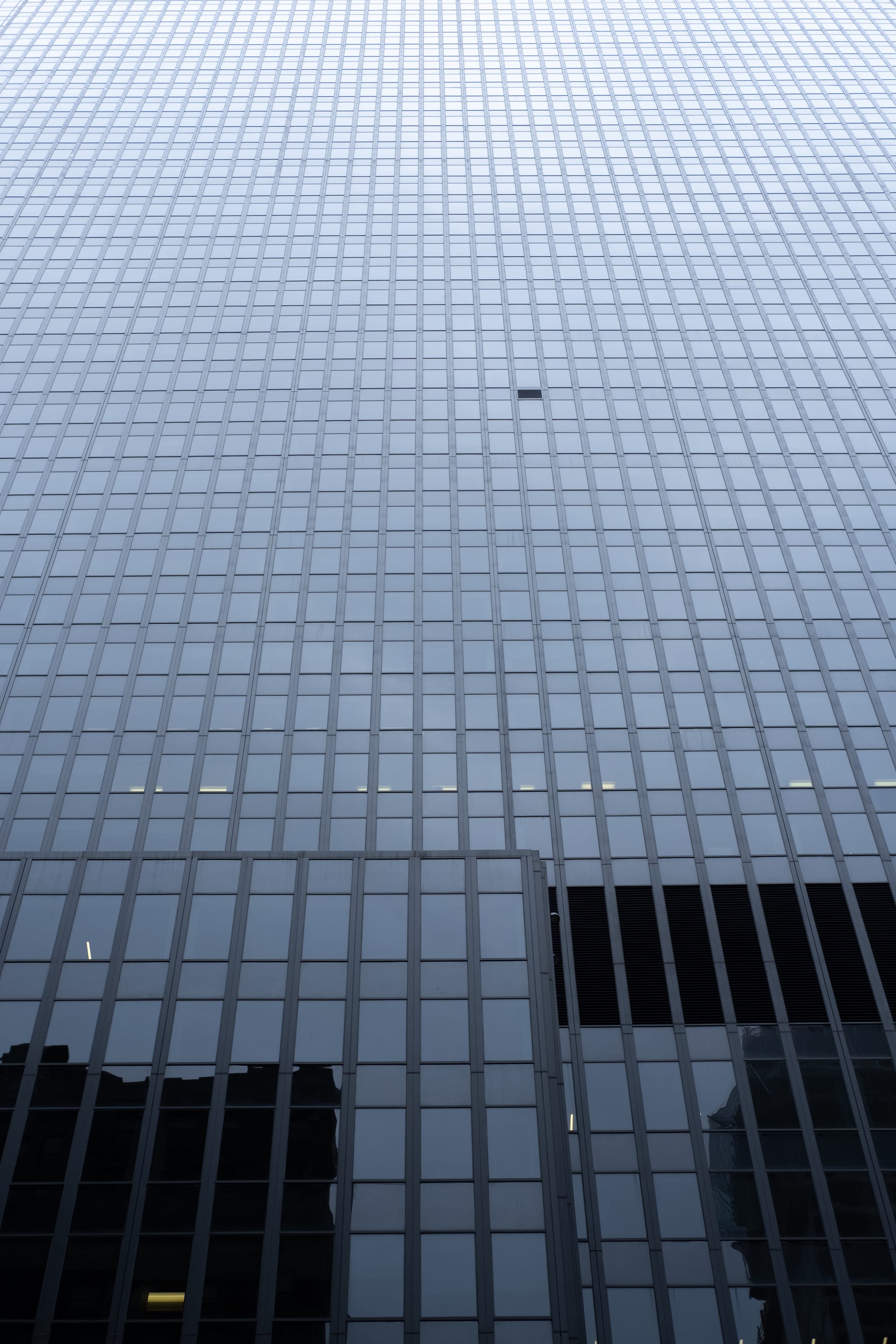

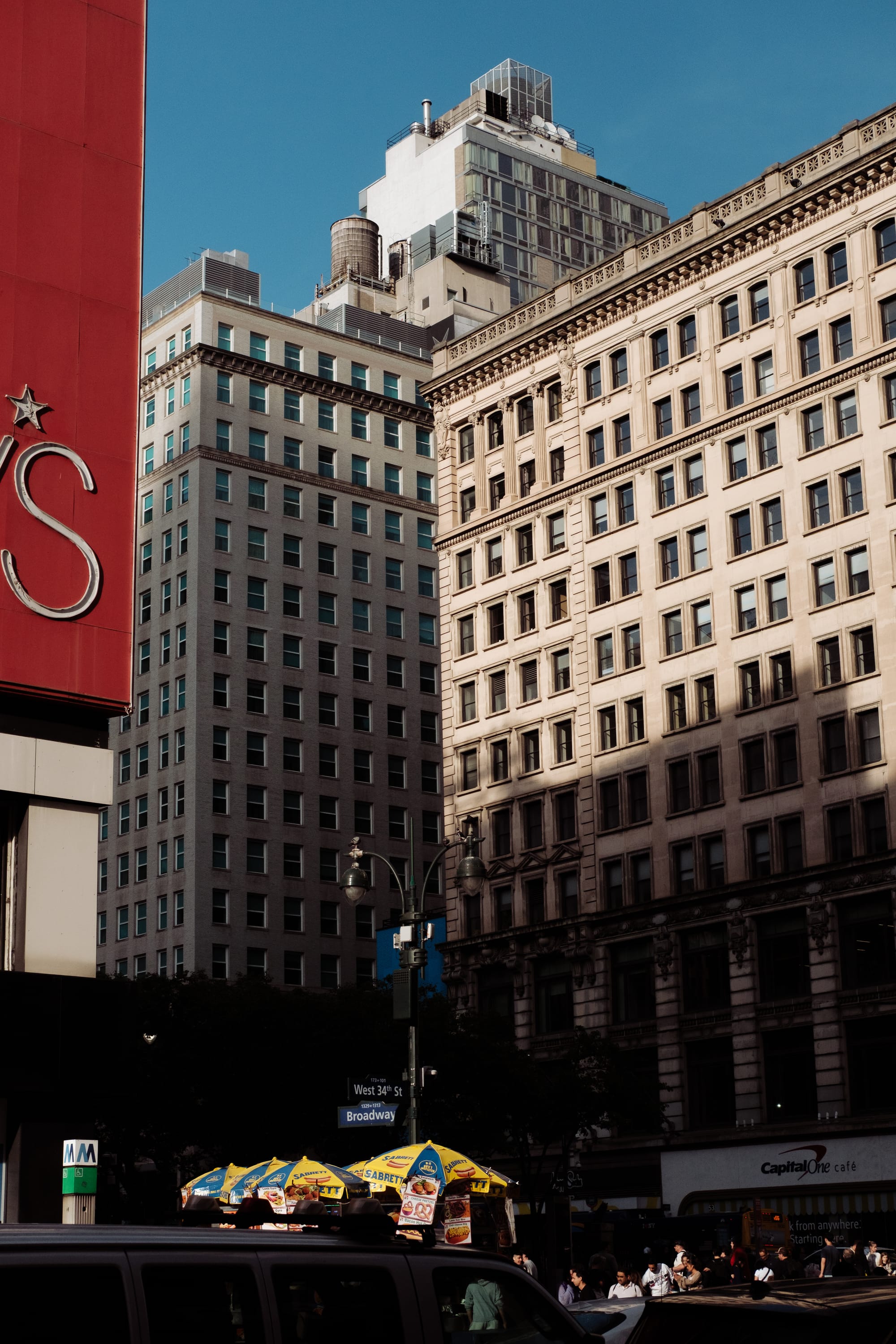
Gallery: 6 images showing the progression from architectural isolation to integrated chaos
Deliberate Adaptation: Changing How I See
First Week of June: Going Wide
Instead of looking up, I went wide.
This sounds simple, but swapping focal lengths mid-orientation felt genuinely jarring. Moving from 50mm to 24mm forced me out of my comfort zone—everything I'd been doing suddenly didn't work. But that very tension exposed both my habits and new possibilities.
These four images are all cropped in post, which means I was still learning to see at 24mm—the expansive view of the lens captured far more than what my minds eye was holding. The color, subject, and structure of Mimi's felt classic, almost like an Edward Hopper painting. American loneliness rendered in warm tones and clean geometry. The other three show me working out layers and creating compositions in highly dynamic environments where everything is moving.
Going wide was both a technical choice and an admission that my Chicago instincts wouldn't work here. New York demanded horizontal thinking, embracing more of the scene rather than extracting single elements from it. This was me learning to work with the excess rather than trying to simplify it away.
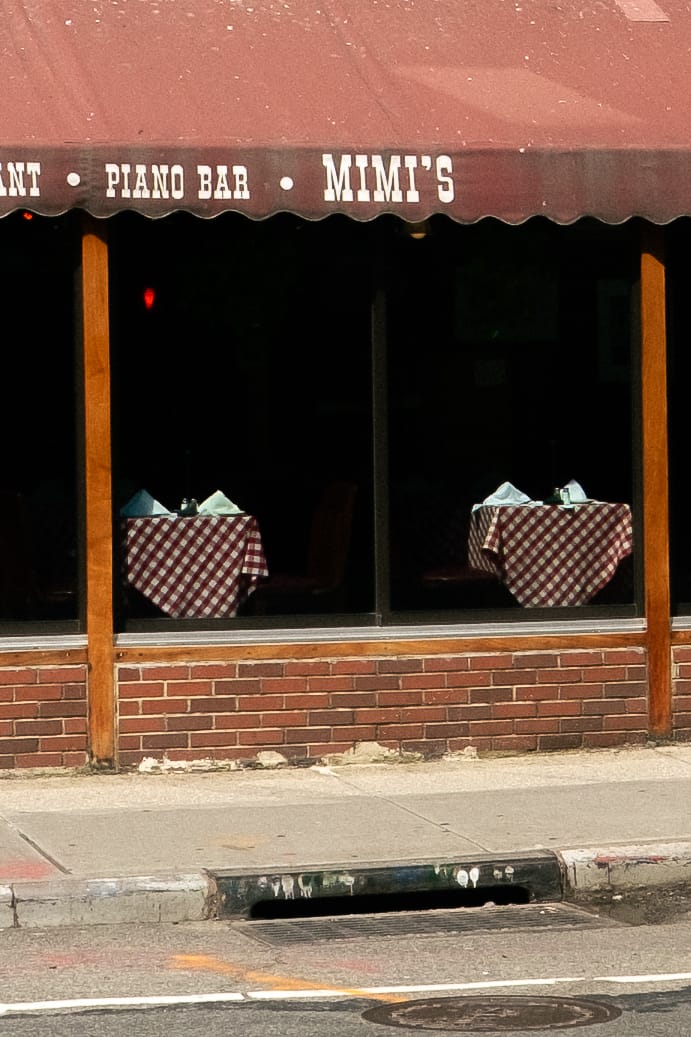

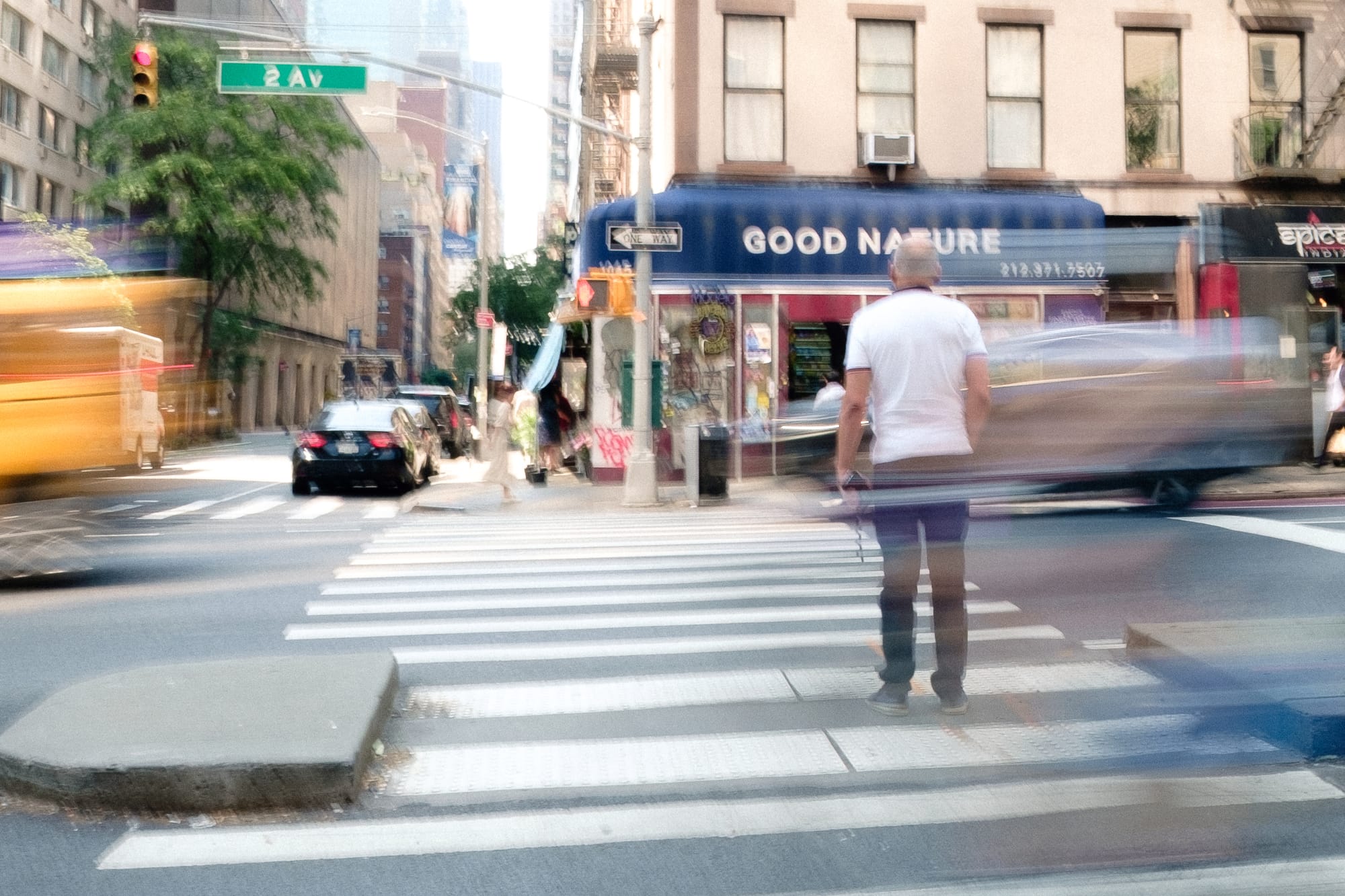
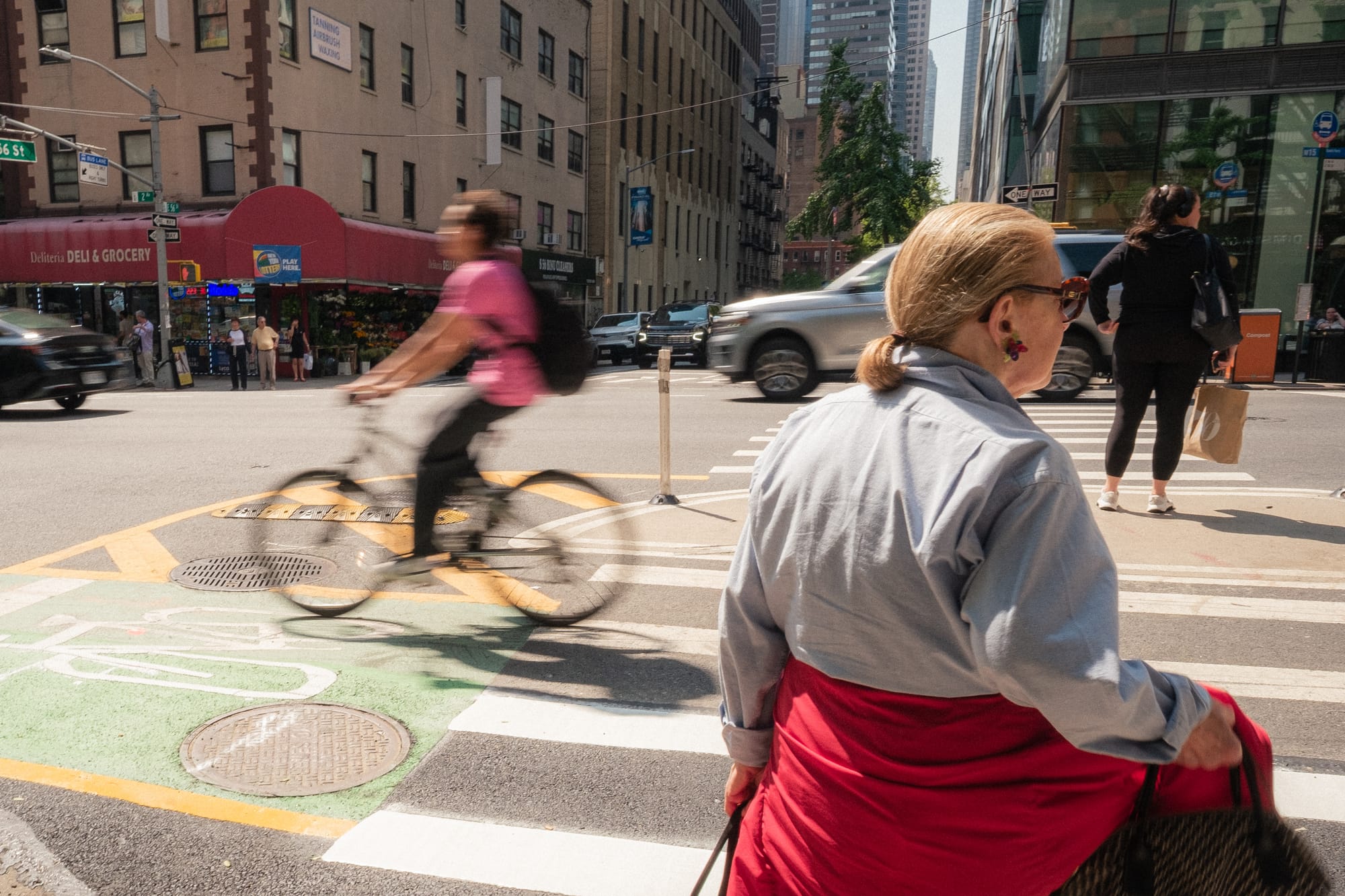
Gallery: 4 images from early June, including Mimi's
Finding Rhythm: The In-Between Moments
July: Carrying the Camera Everywhere
These are the kinds of images you get when you stop "going to get photos" and start simply being with your camera.
July taught me that photography isn't about "perfect" images—it's about documenting the unscripted, life-out-loud moments that happen in the mundane everyday. The small, quiet, fleeting moments we overlook, overshadowed by grand expectations.
This is where life actually happens: now. In-between the planned and the performed.

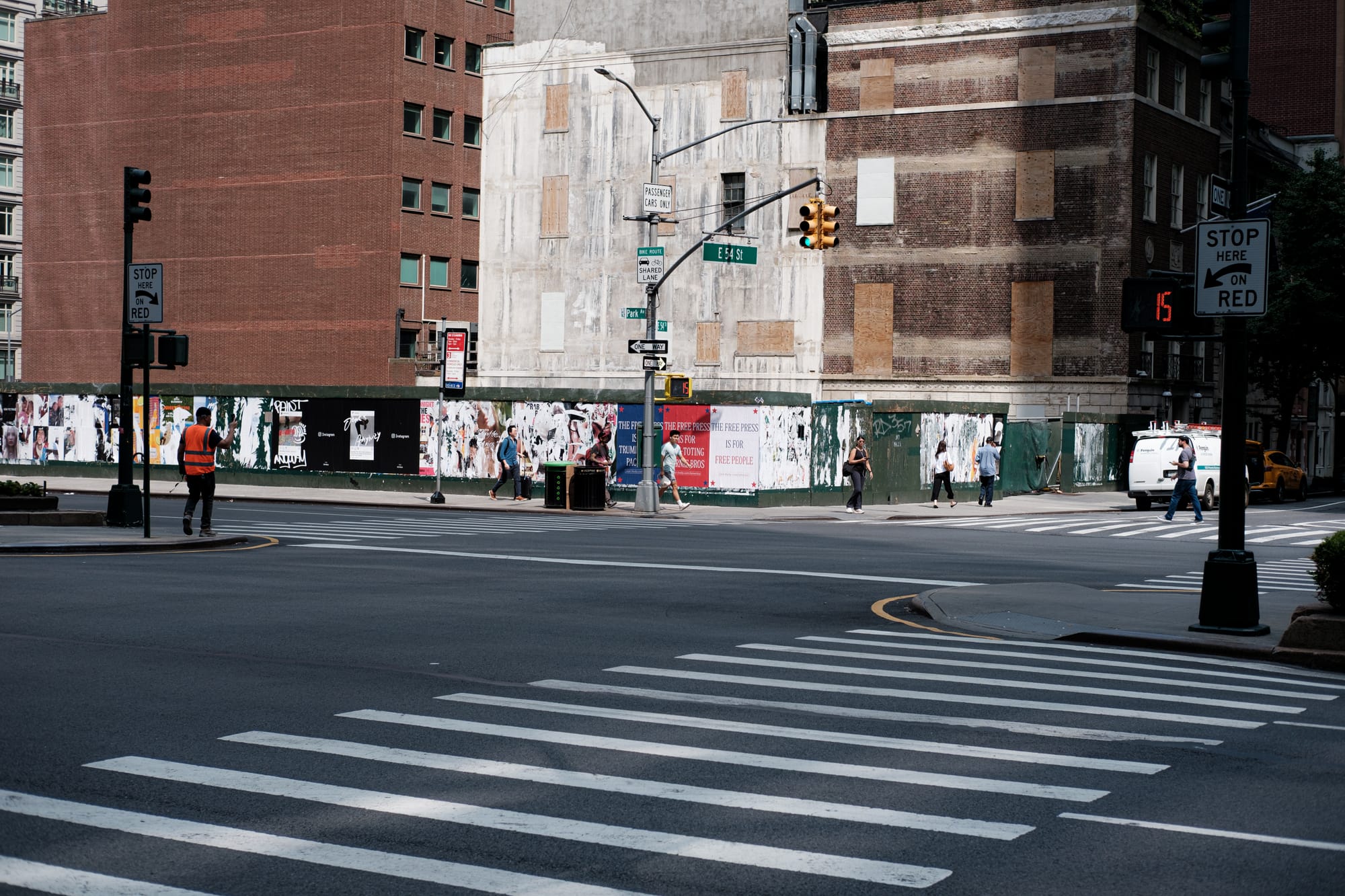

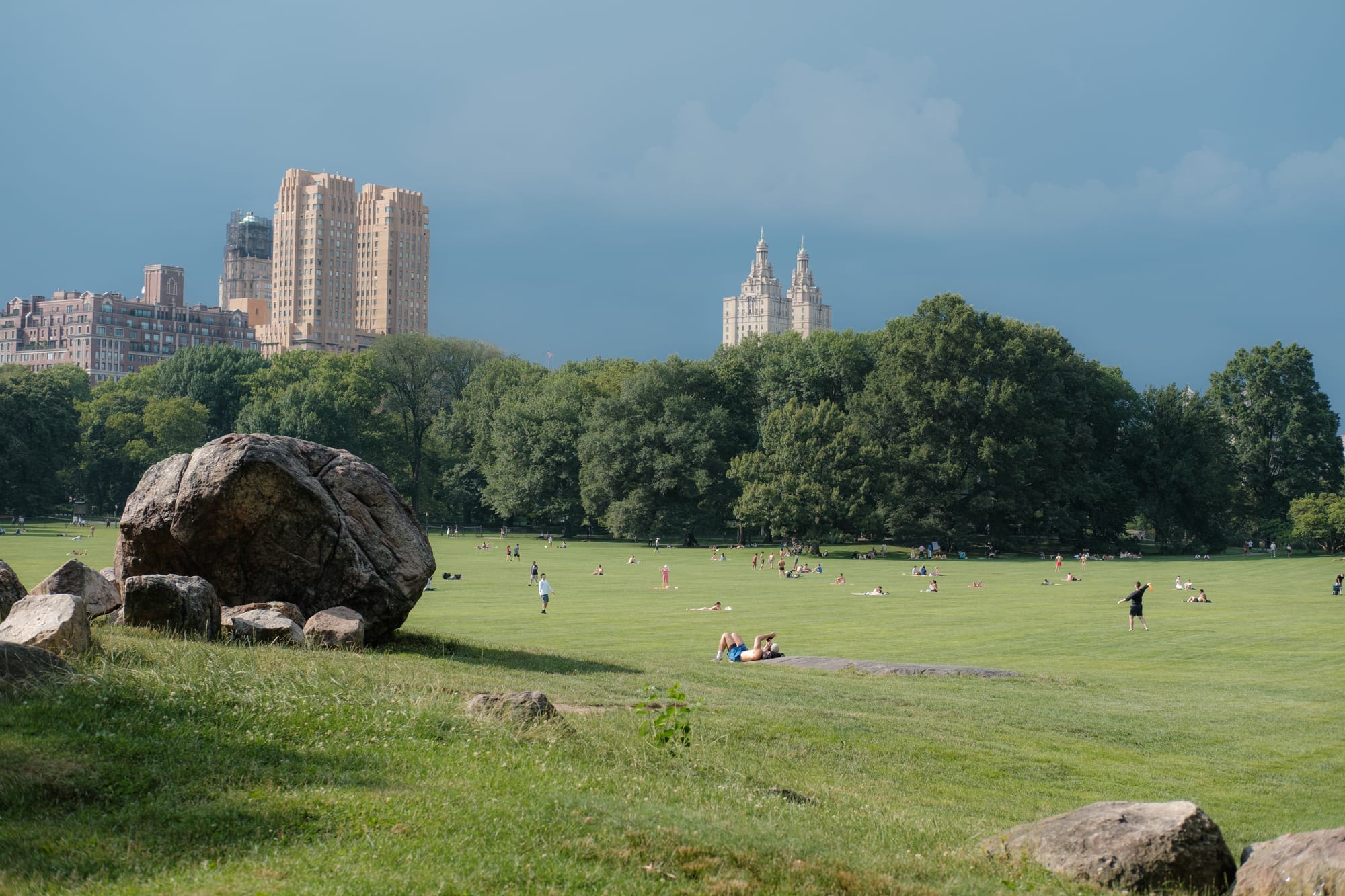
Gallery: Casual July moments—the spontaneous everyday shots
Controlled Chaos: Learning to Work With Crowds
July 4th: Coney Island
Coney Island became the perfect training ground for recalibrating. Lots of traffic, but more tamed than Manhattan. This allowed me to get more comfortable with the mass of crowds within a somewhat controlled environment—learning to anticipate movement, to position myself where moments would come to me rather than chasing them.
It was practice for density without the full overwhelm of Midtown. A step between isolation and total immersion.


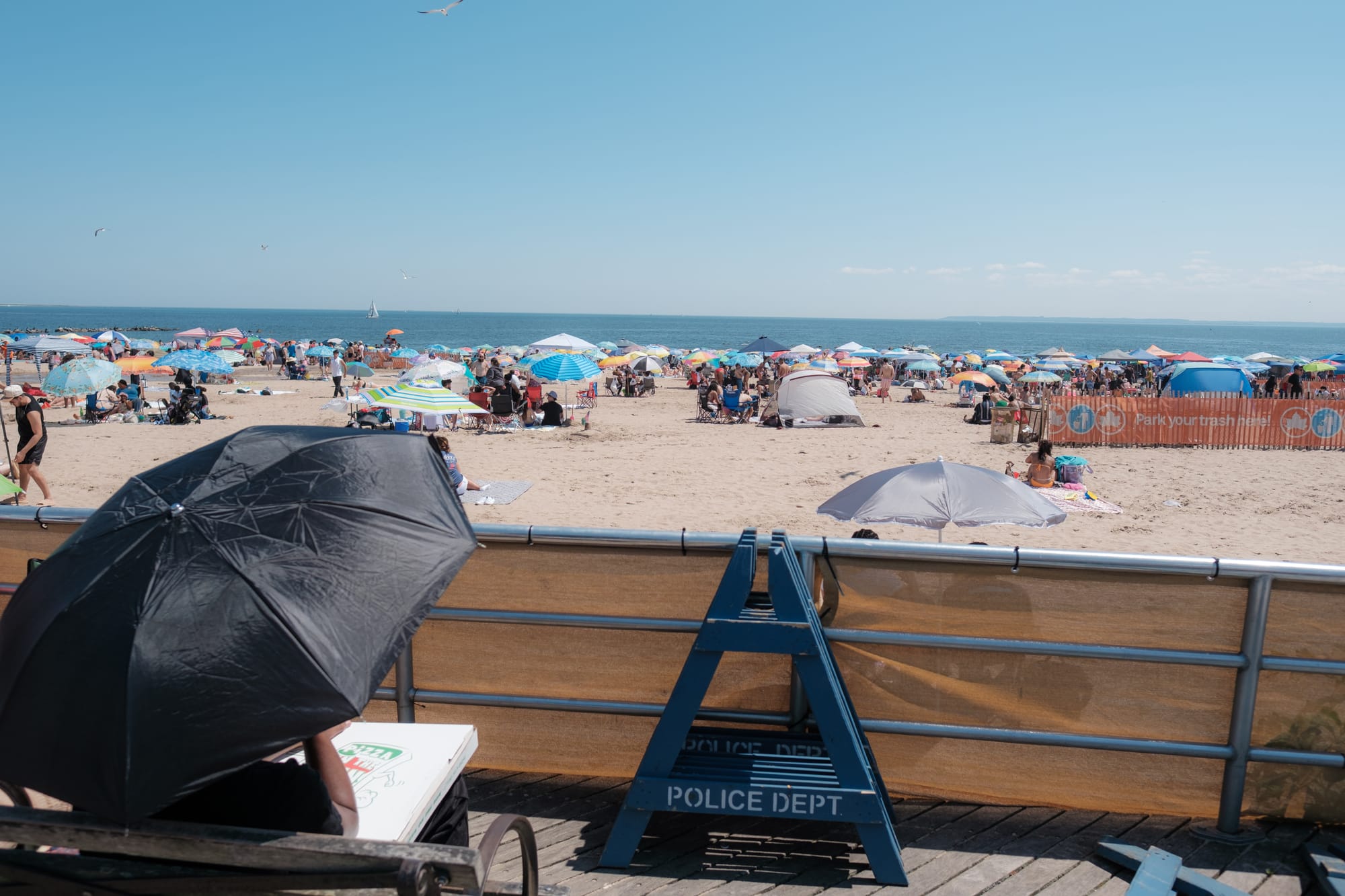
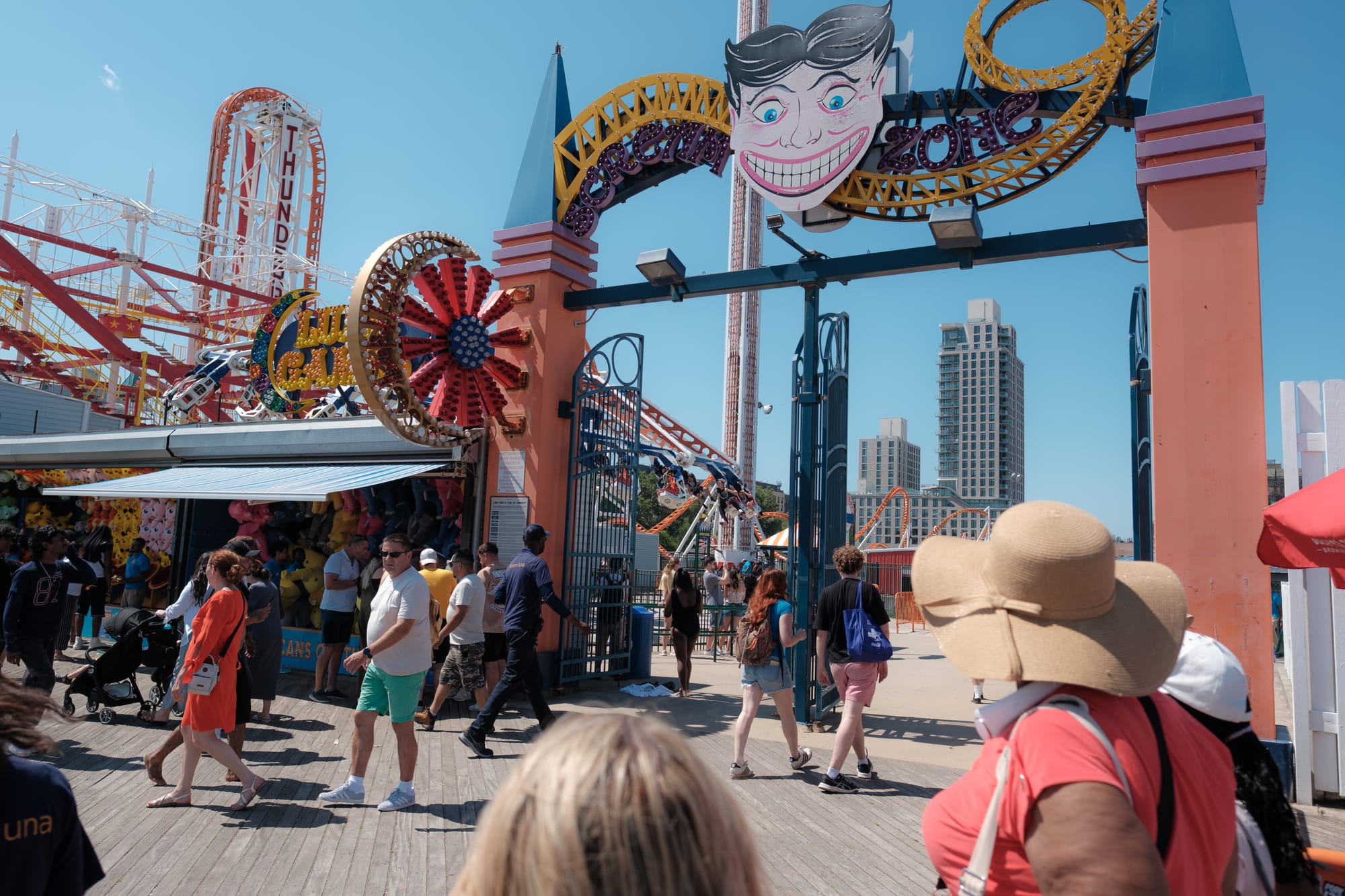
[Gallery: 4 Coney Island images]
Finding Order in Scale: The Bridges & Working With Layers
July: Structural Logic
New York's bridges are like its suspenders: a prominent feature that holds it all together. But unlike suspenders, their massive presence and scale make them a delight to photograph and explore.
For the first five photos here, I exposed for the highlights to preserve detail, then raised the shadows in post. This technical approach was an answer to the contemplative question I'd been asking all summer: How does this city not collapse? By revealing the geometric construction underneath, I saw the structural logic that holds all the chaos together. The bridges became a metaphor: massive scale creates its own order, its own timeless presence.
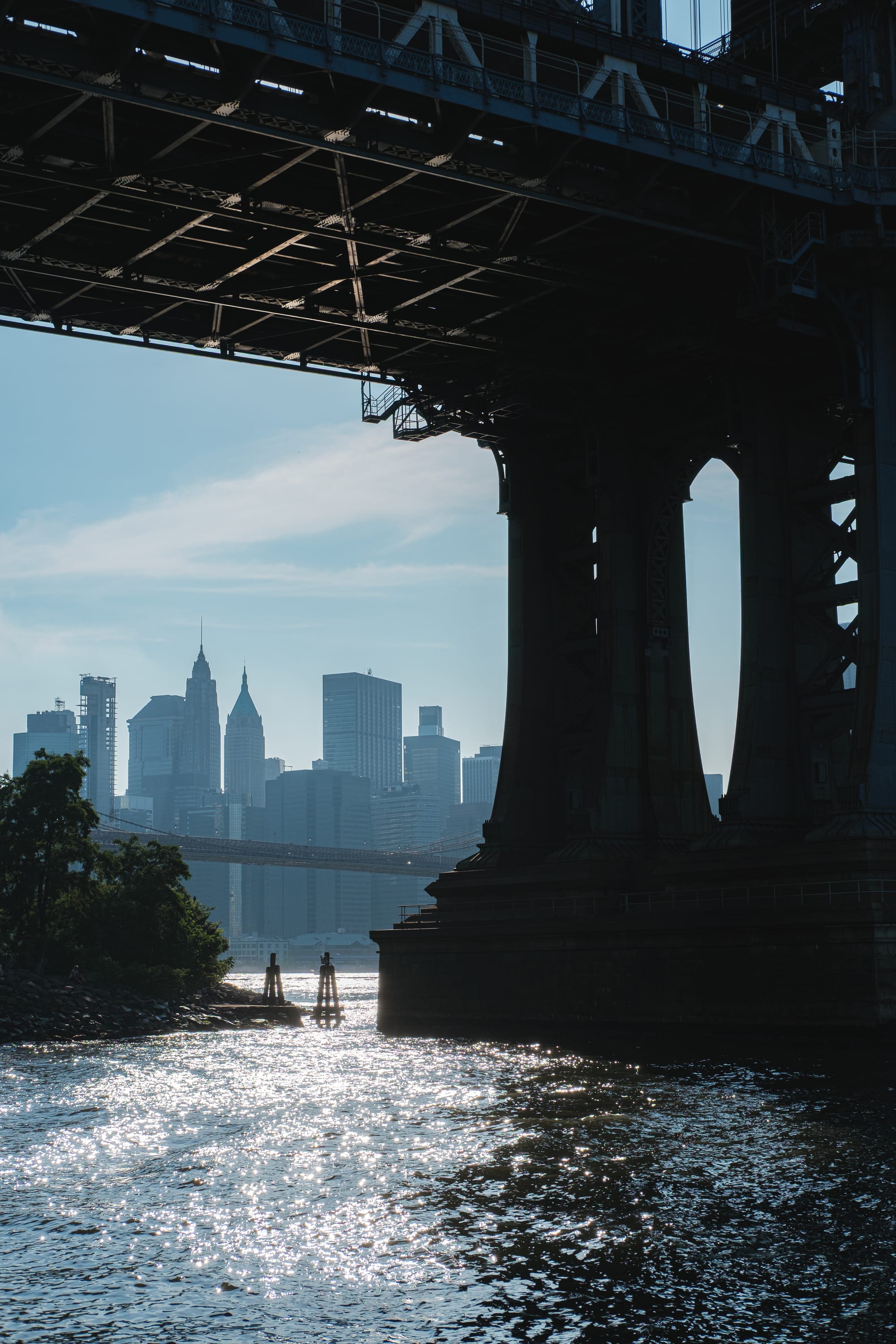




The Timeout Market photos show me experimenting with a different kind of density: light and dark, foreground silhouettes against backlit backgrounds. The architecture and interior design create variety and depth naturally—I didn't need to add complexity, just find the layers already present and make them visible.
I was learning that in dense environments, the work isn't construction but revelation. The composition is already there; your job is positioning yourself to see it.
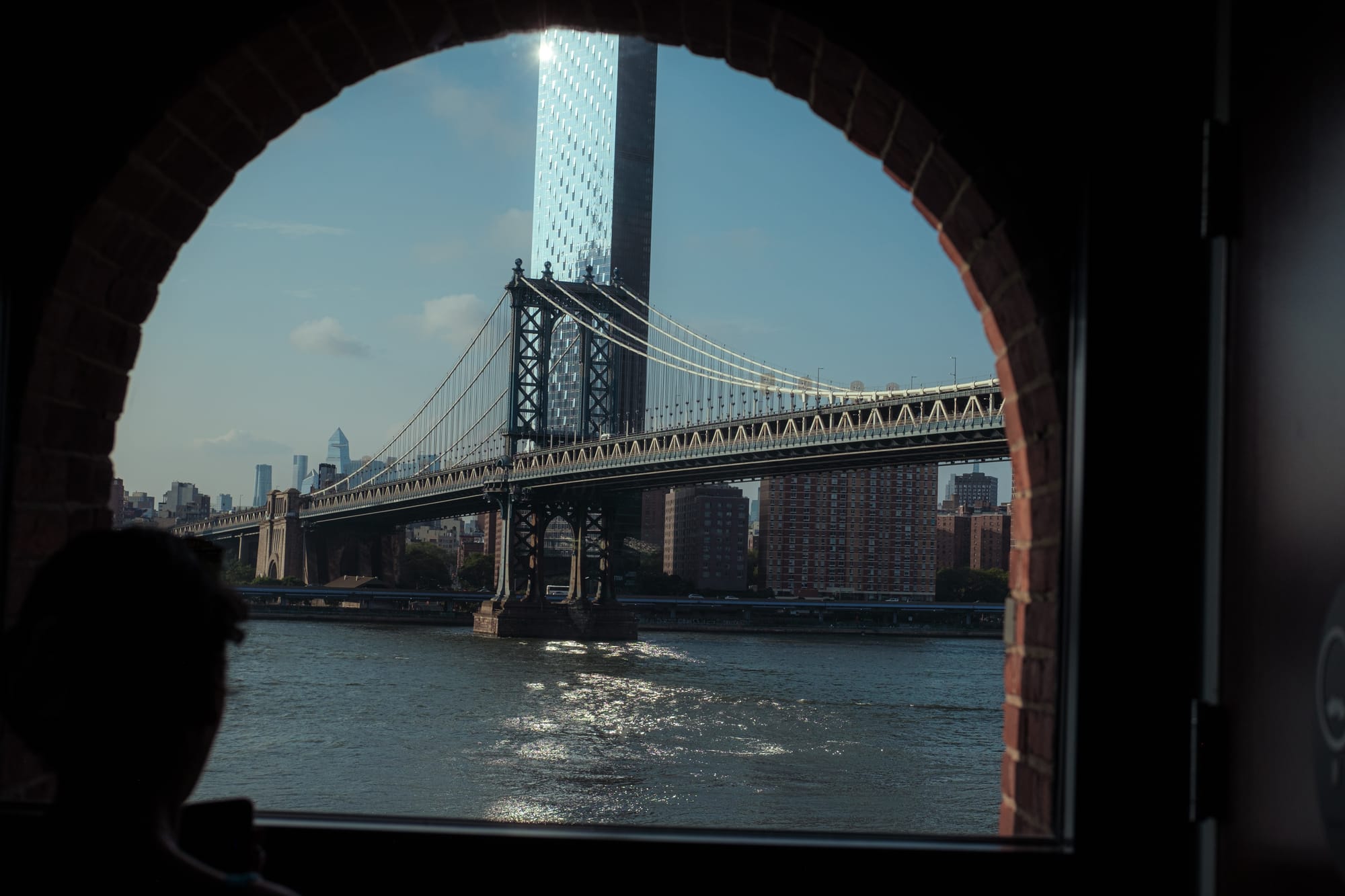

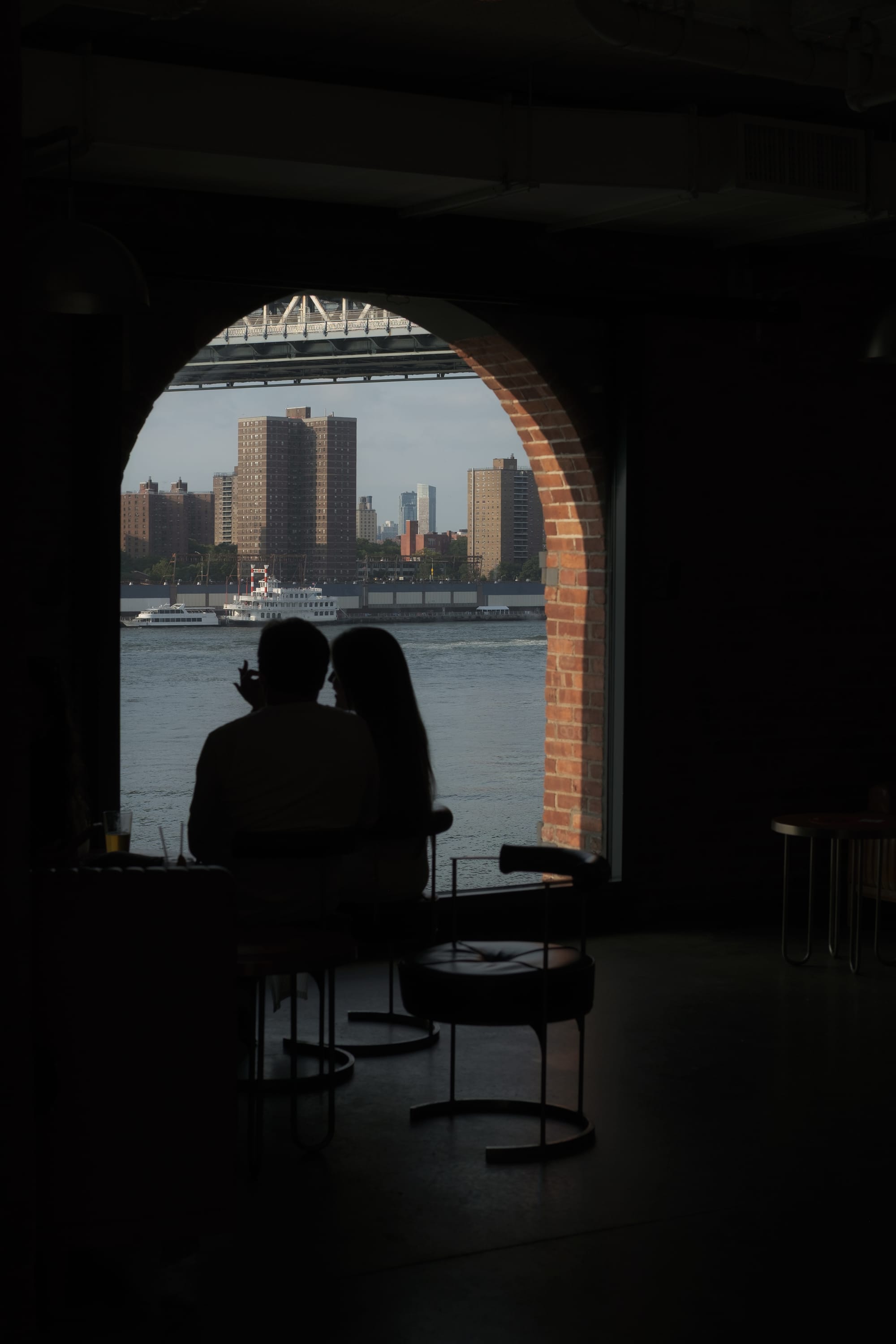

Commuting Home: Density as Composition
Late July: Learning to See in Layers
The commute photos capture something I was beginning to understand about working with New York's density: late-day highlights in the back layer interrupted by buildings, light shadows composed of steel beams and concrete in the mid-layer, a dark silhouette in the foreground acting as a suggested subject. These photos are quite dense and textured as standalone images, but they're made more dynamic when presented in sequence—revealing the relationship between subject and environment.
Red Shadows: Chinatown Experiment
Late July: Trusting What Works in Practice
While in Chicago, the Flamingo—the red arched structure at the Federal Plaza—got me practicing my color grading more. There's something mesmerizing about the structure, but what keeps me looking is the red. While editing a few photos of the Flamingo, I started toying with the color grading and found my eye wanted red shadows. Conventional advice says this shouldn't work, but it works in practice.
Chinatown in NYC is no exception.
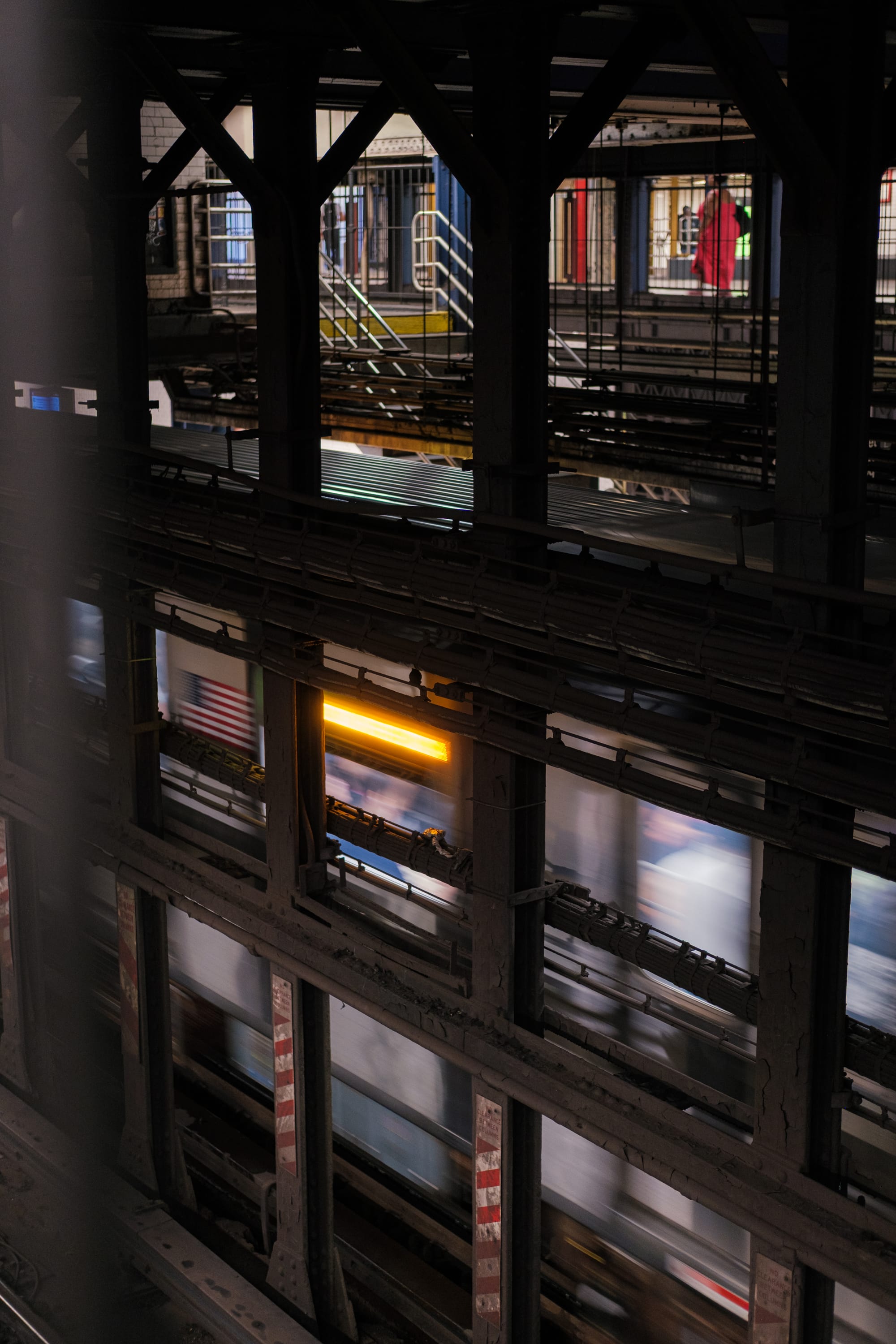


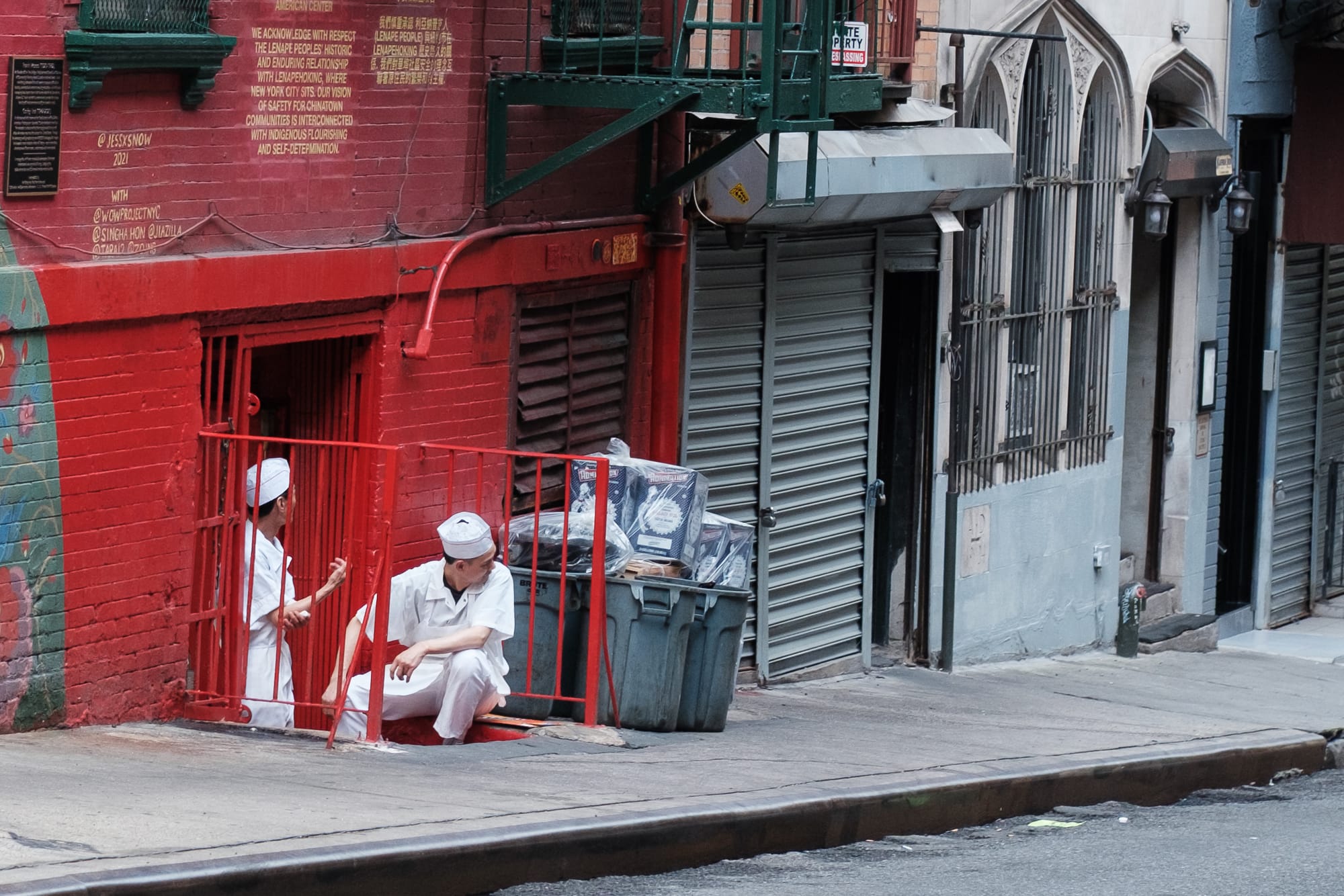
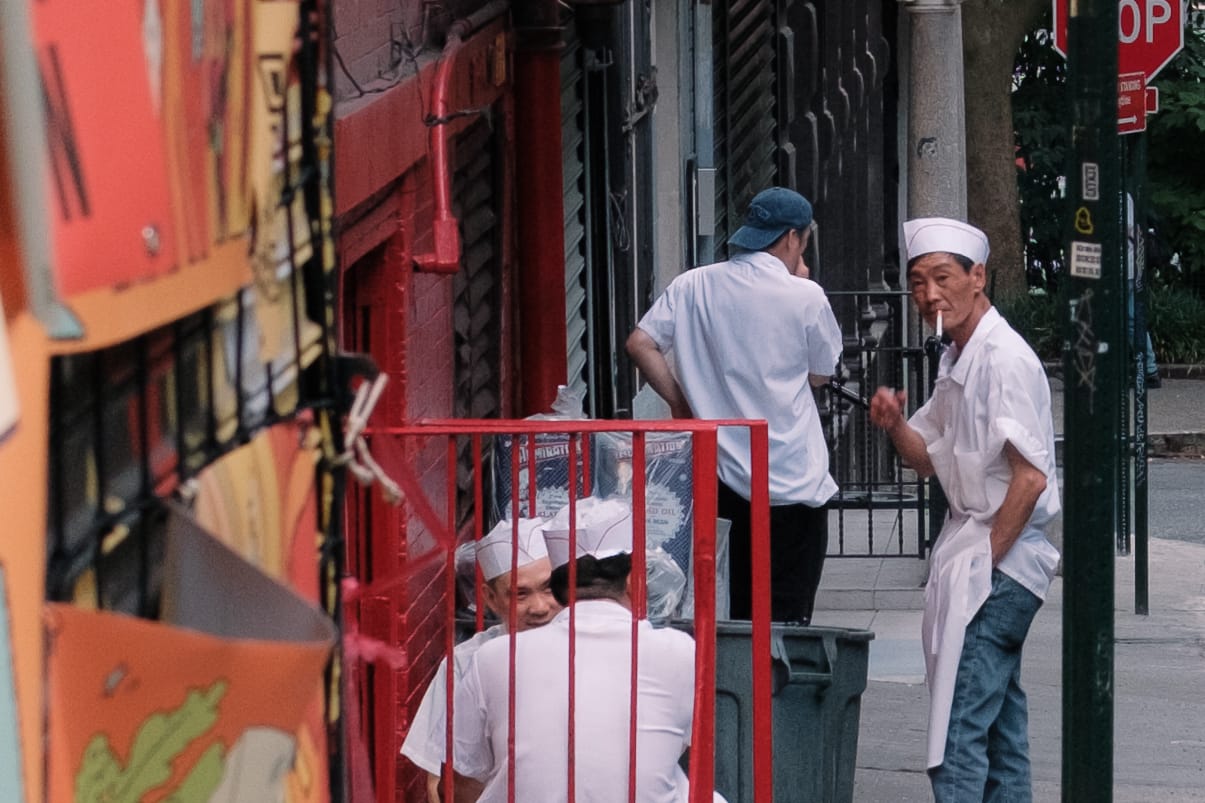

[Gallery: 1 train and 5 Chinatown images with red shadow treatment]
Contemplative Breakthrough: Learning to Let Moments Come
August: The Sequence That Changed Everything
I have no desire to shoot video. I love and respect it, but it's a different medium with different possibilities. I'm committed to exploring the infinite variety and clear boundaries of stills and what it draws out of me. This August sequence is when it finally clicked.
I've learned that as a photographer, you don't have to move nearly as much as you think. Moments come to you, and are often right where you are. This sequence is testimony to that principle: I found a position, held it, and let the scene do the work. Light shifted, shadows moved, the environment revealed itself in layers—one frame at a time.
Searching for Depth: Experimenting Without Answers
August: Texture and Uncertainty
I can't quite put these images in a box. They somehow relate and they're searching for something. Depths, layers, textures, color—I'm working through questions I don't have language for yet. Not every gallery needs to resolve into a clear lesson.
Sometimes the work is just showing up and seeing what emerges, trusting that understanding will come later. Seeing, as with life, precedes understanding.
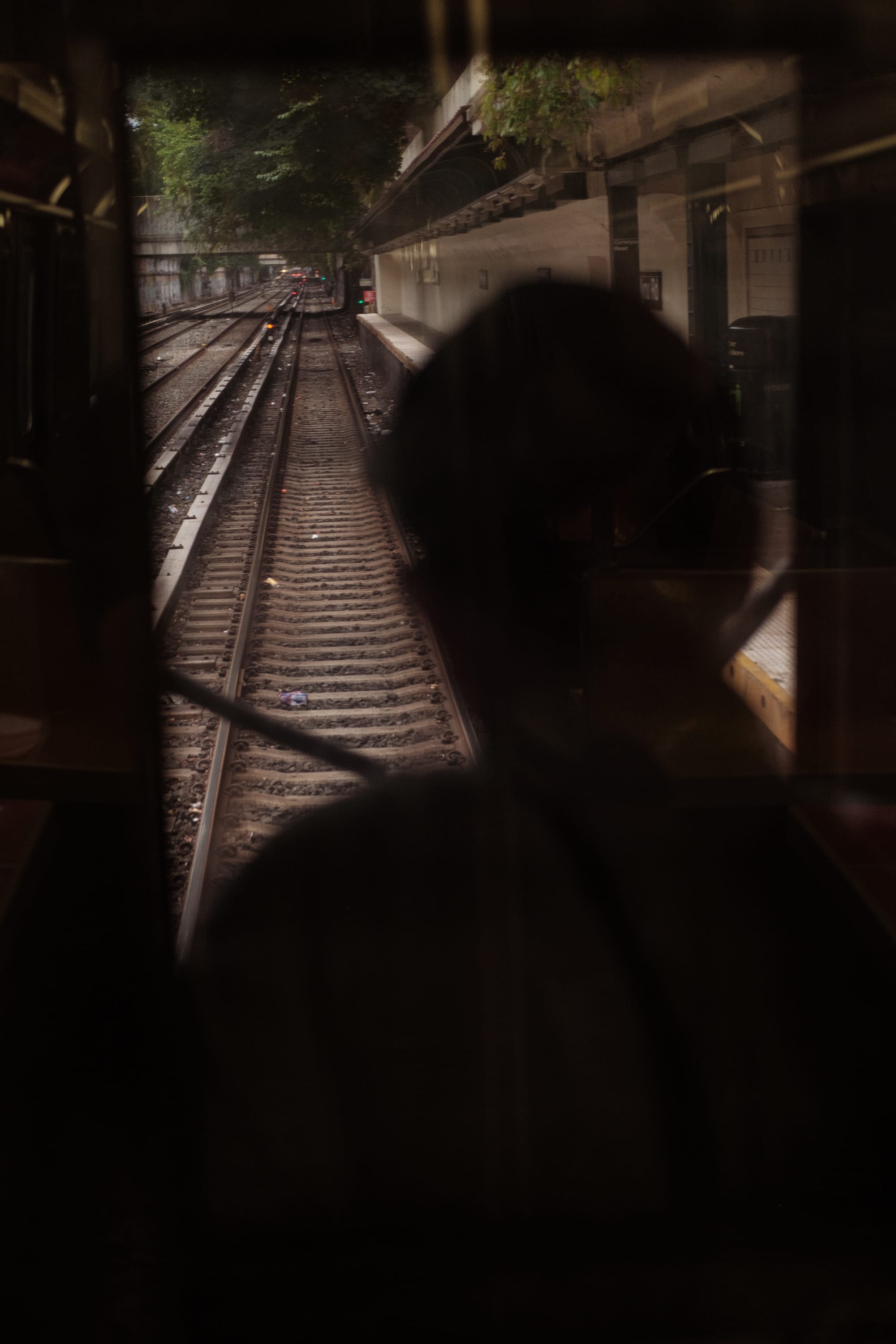

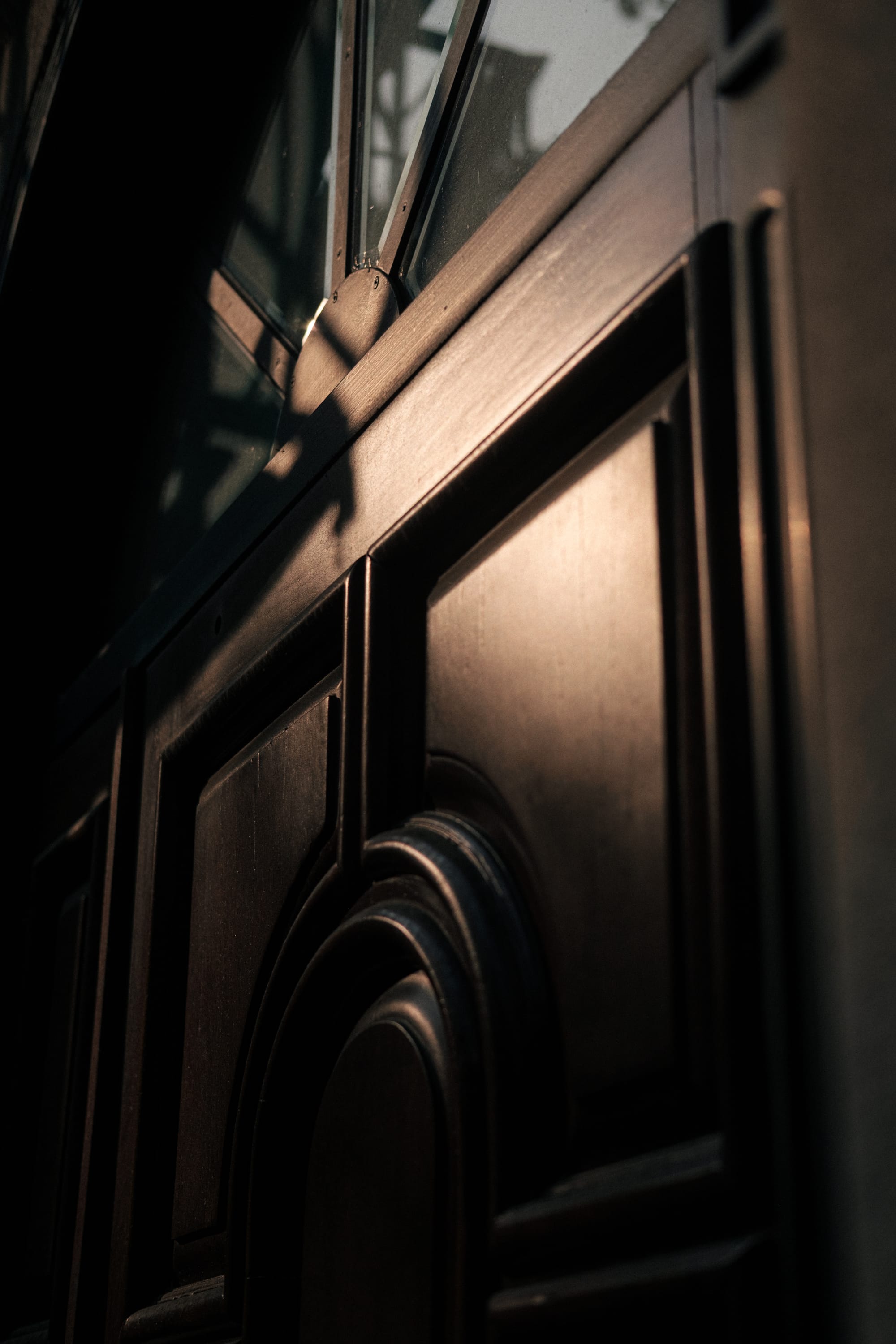

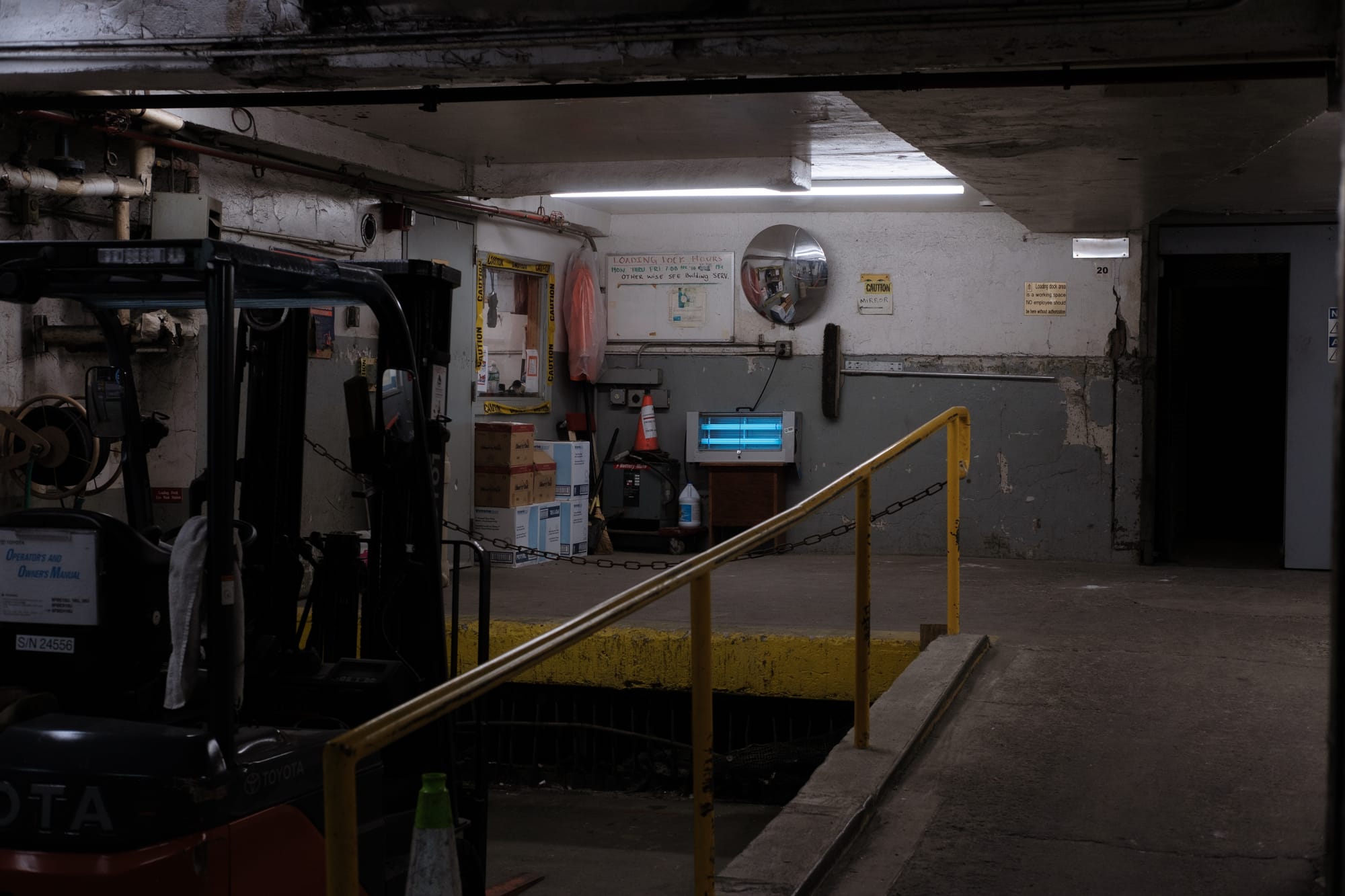
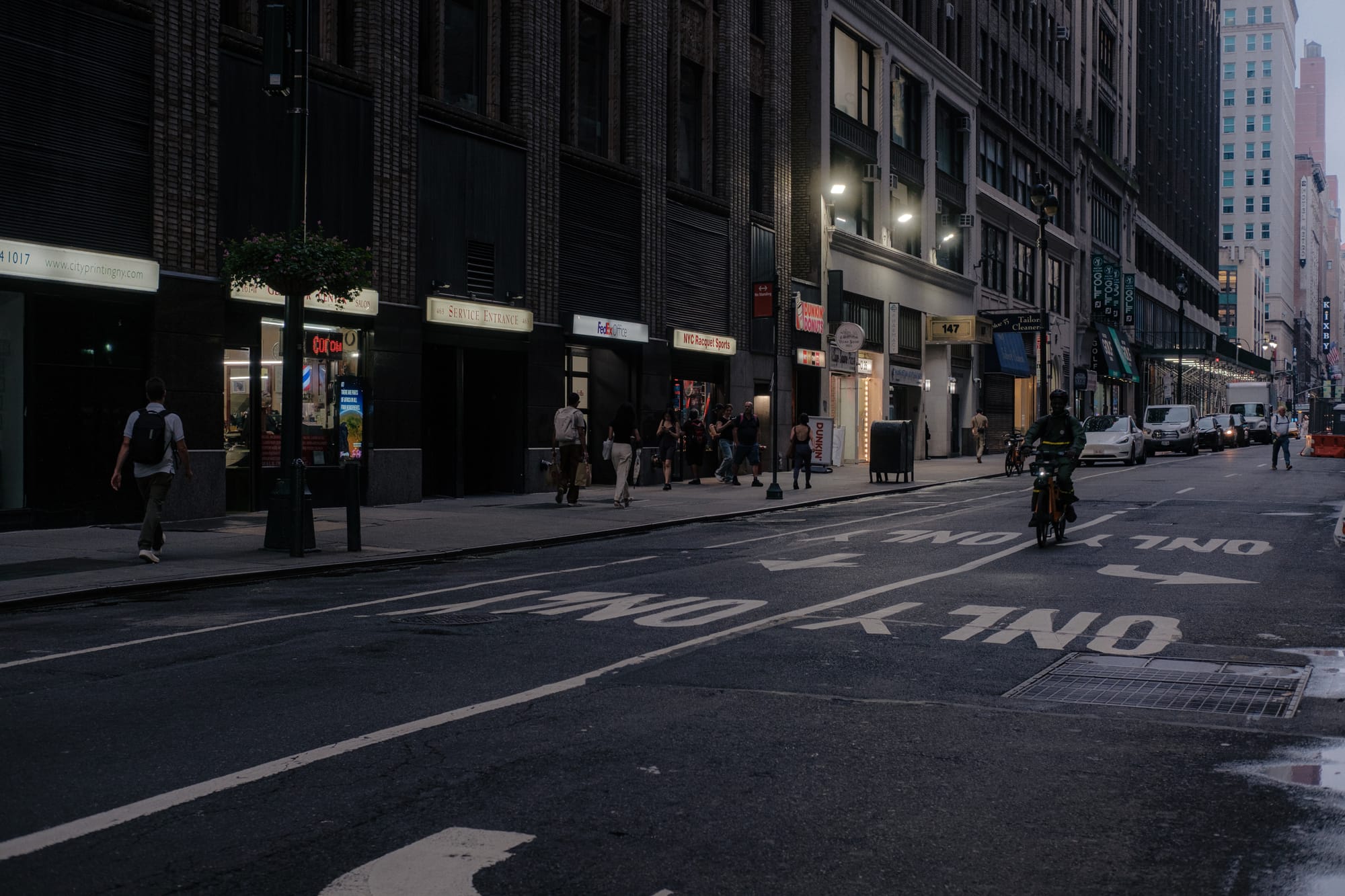
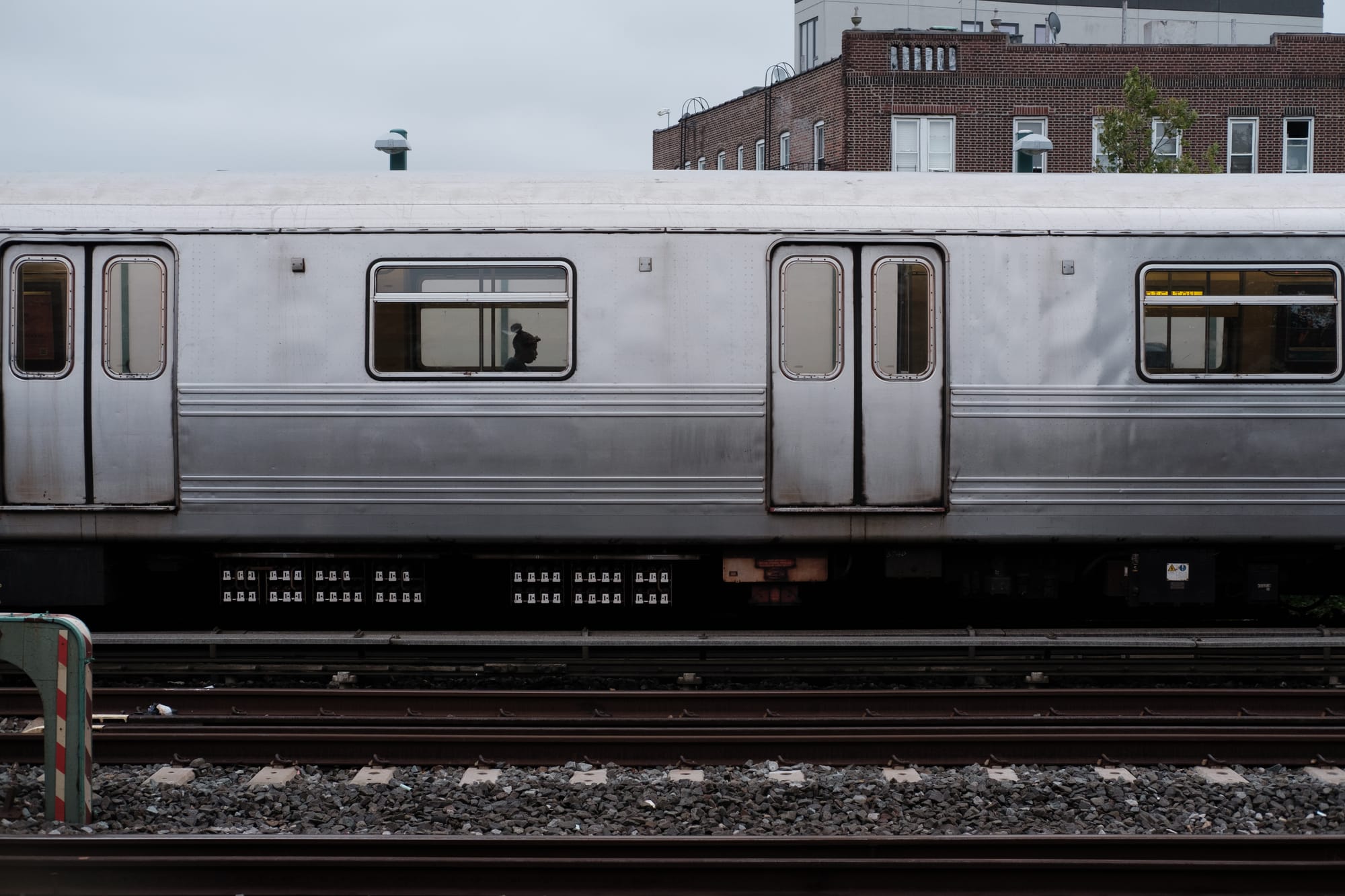

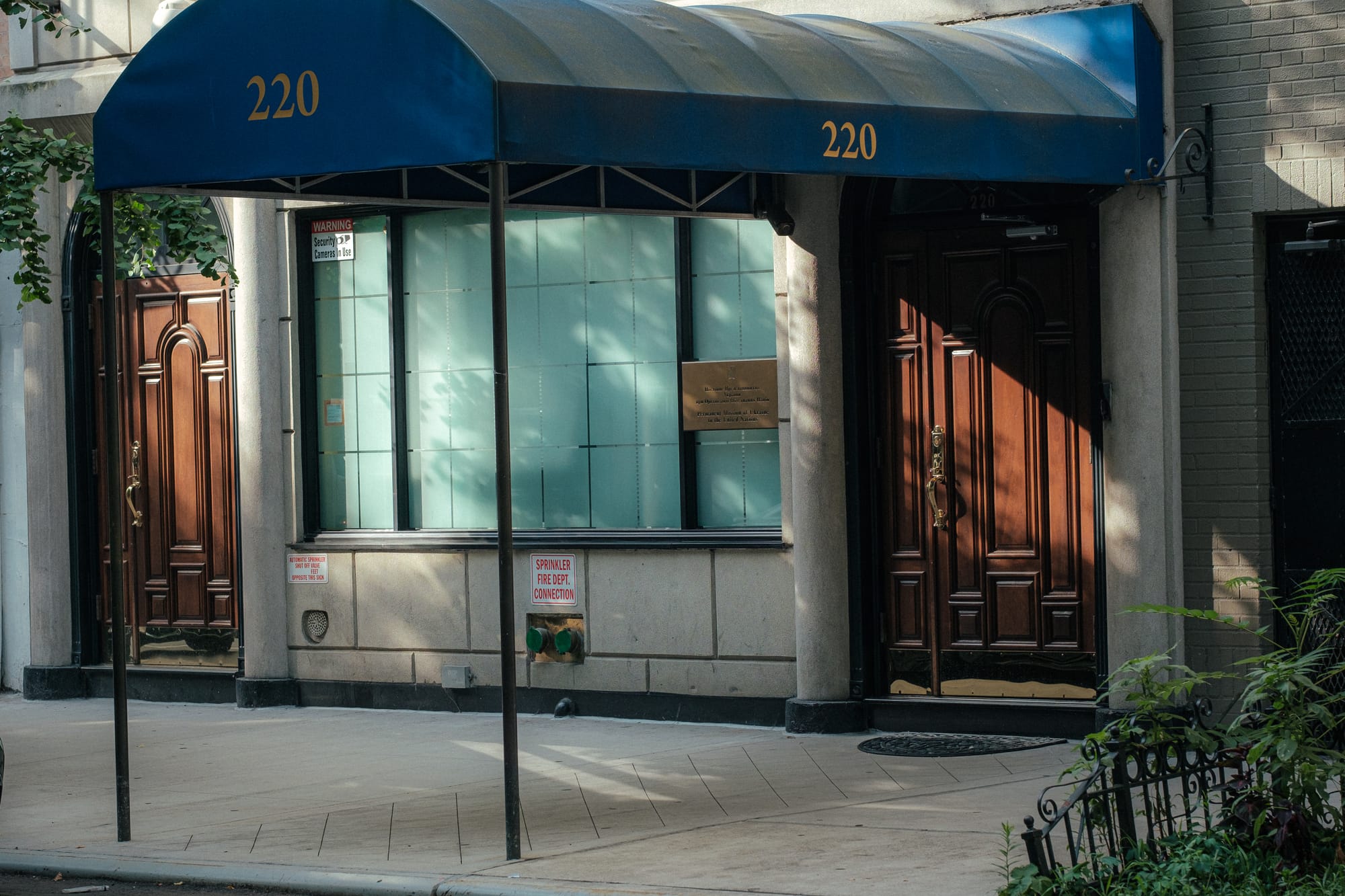


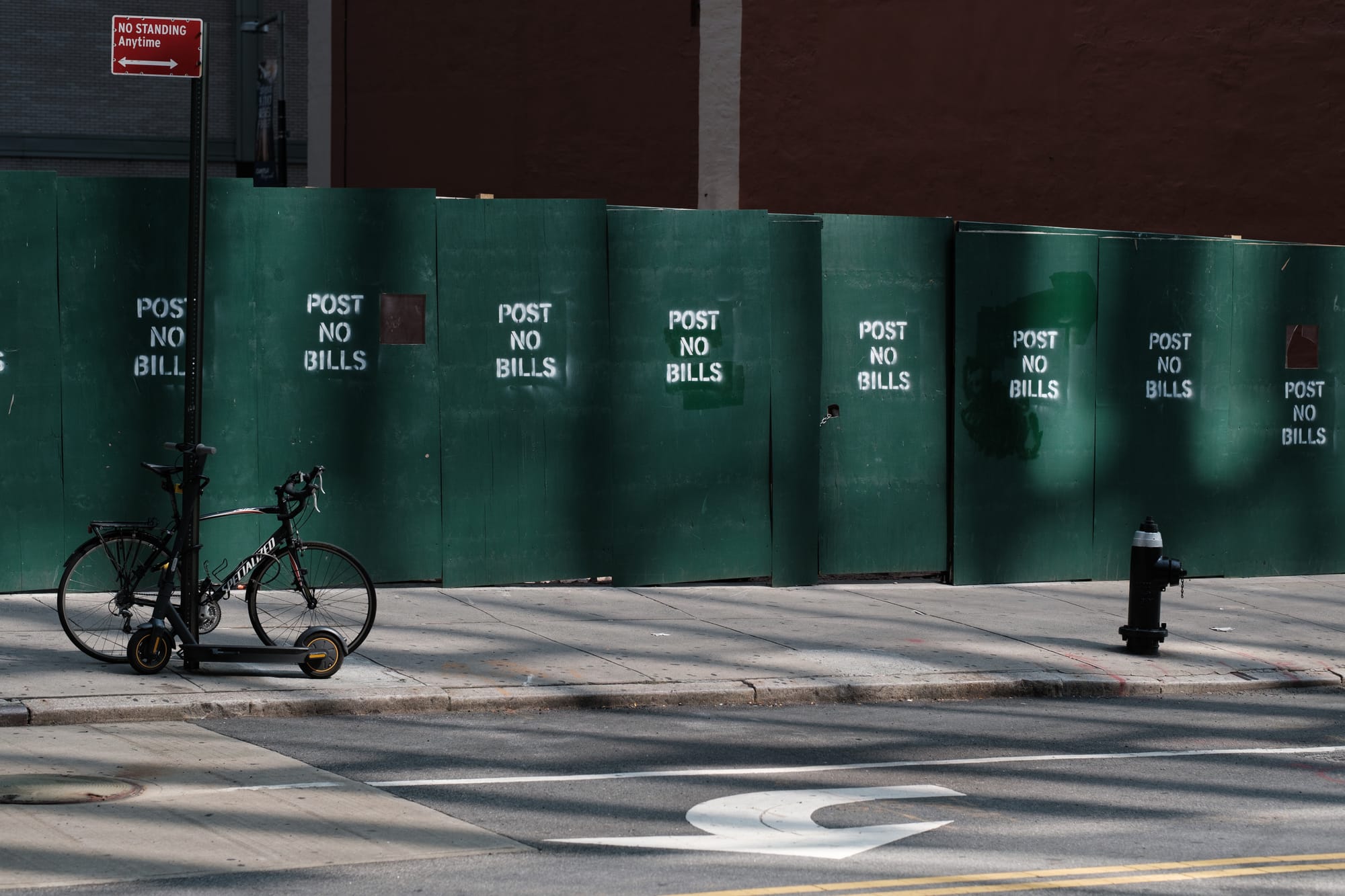

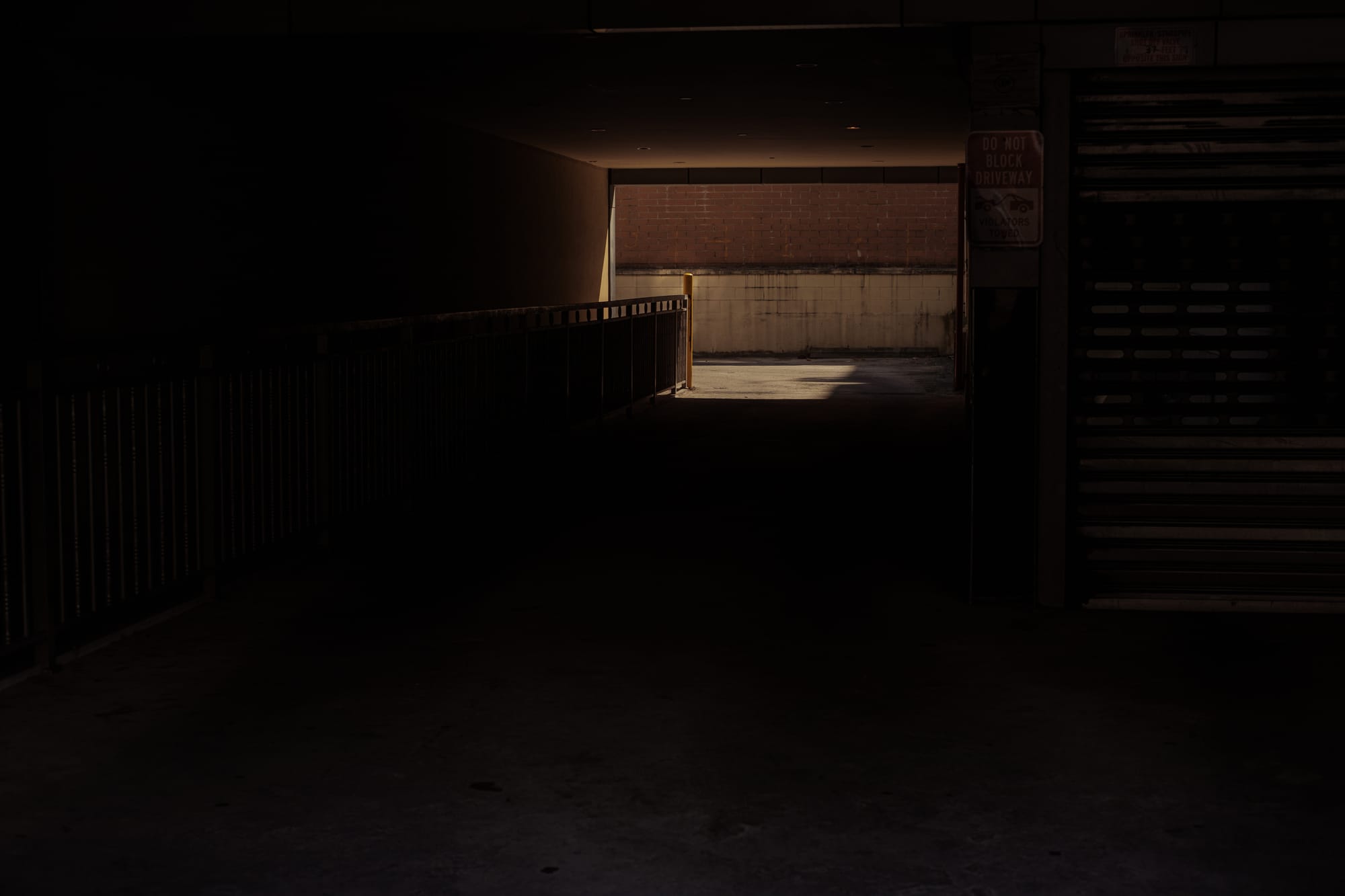


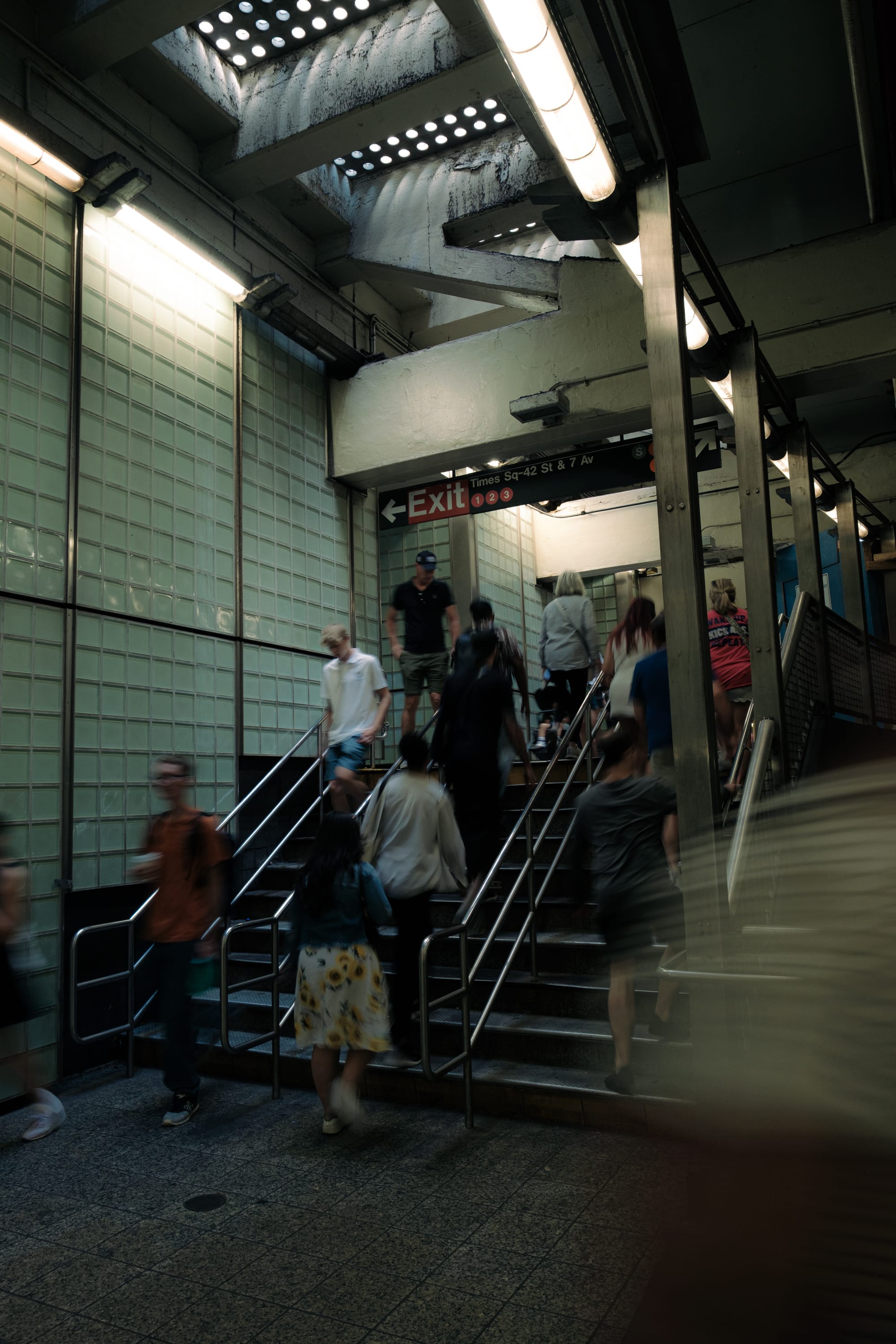
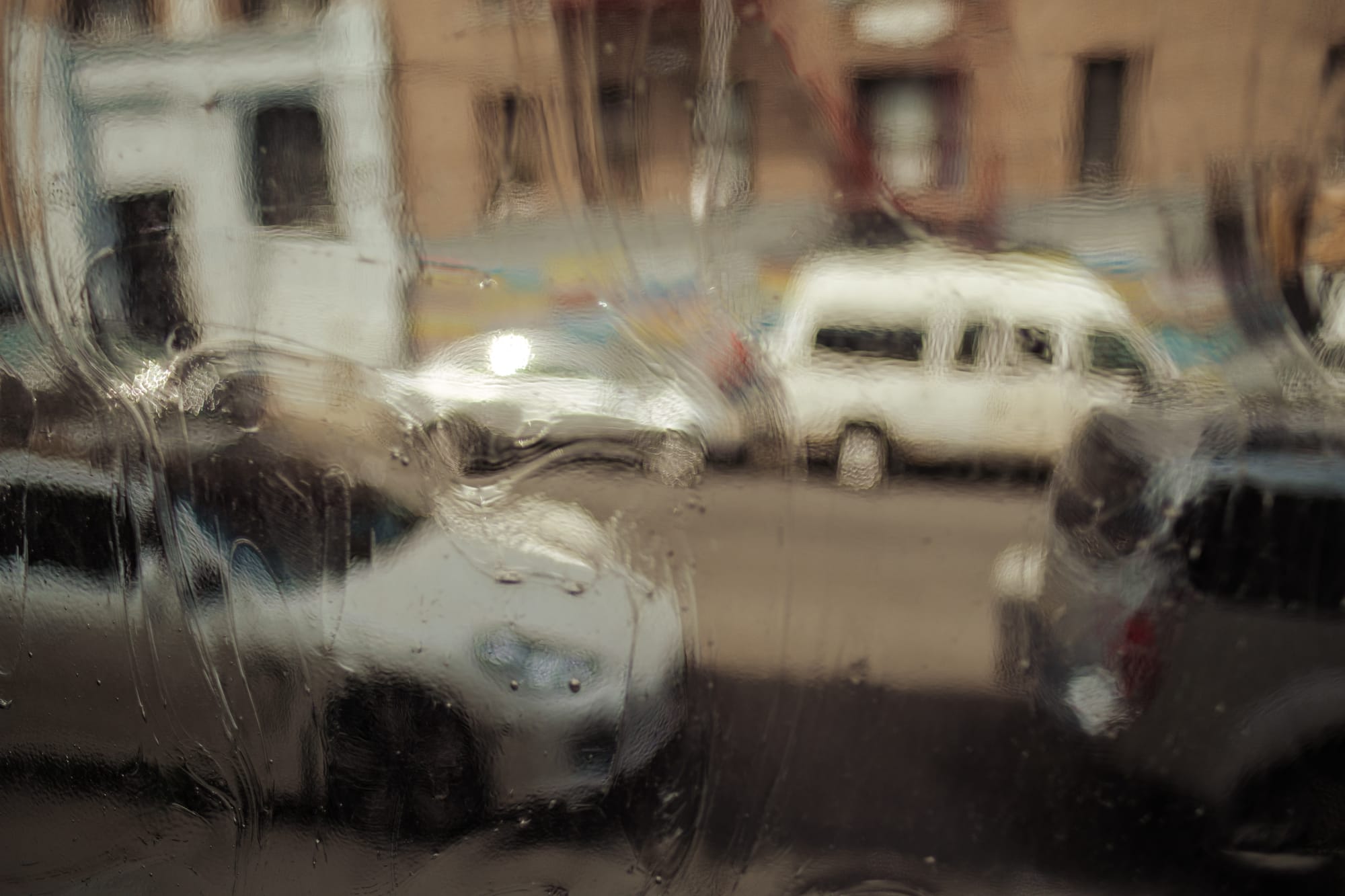
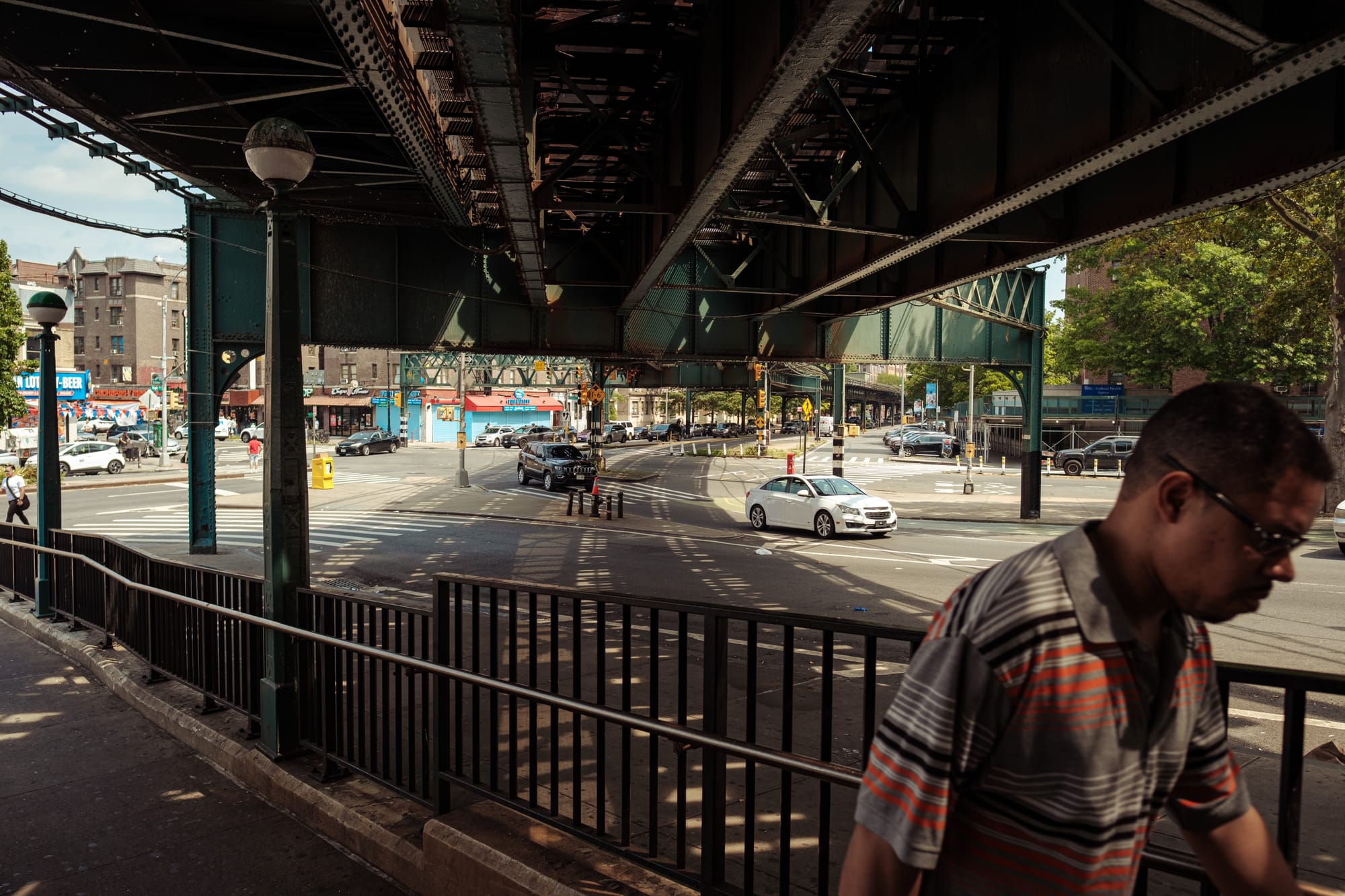
[Gallery: 20 images exploring depth/layers/texture/color]
Finding Refuge: The Met Cloisters
August: A Living Still Life
The Met Cloisters is a living still life, invoking a bygone era appreciative of reverence, stillness, light, and architecture. We need more contemplation like this in our cities. A bit north of the chaos, this felt like a refuge—a reminder that even within New York's relentless density, spaces for quiet attention still exist. You just have to seek them out.
After three months of learning to find quiet within chaos, the Cloisters offered something different: quiet by design. Both are necessary.
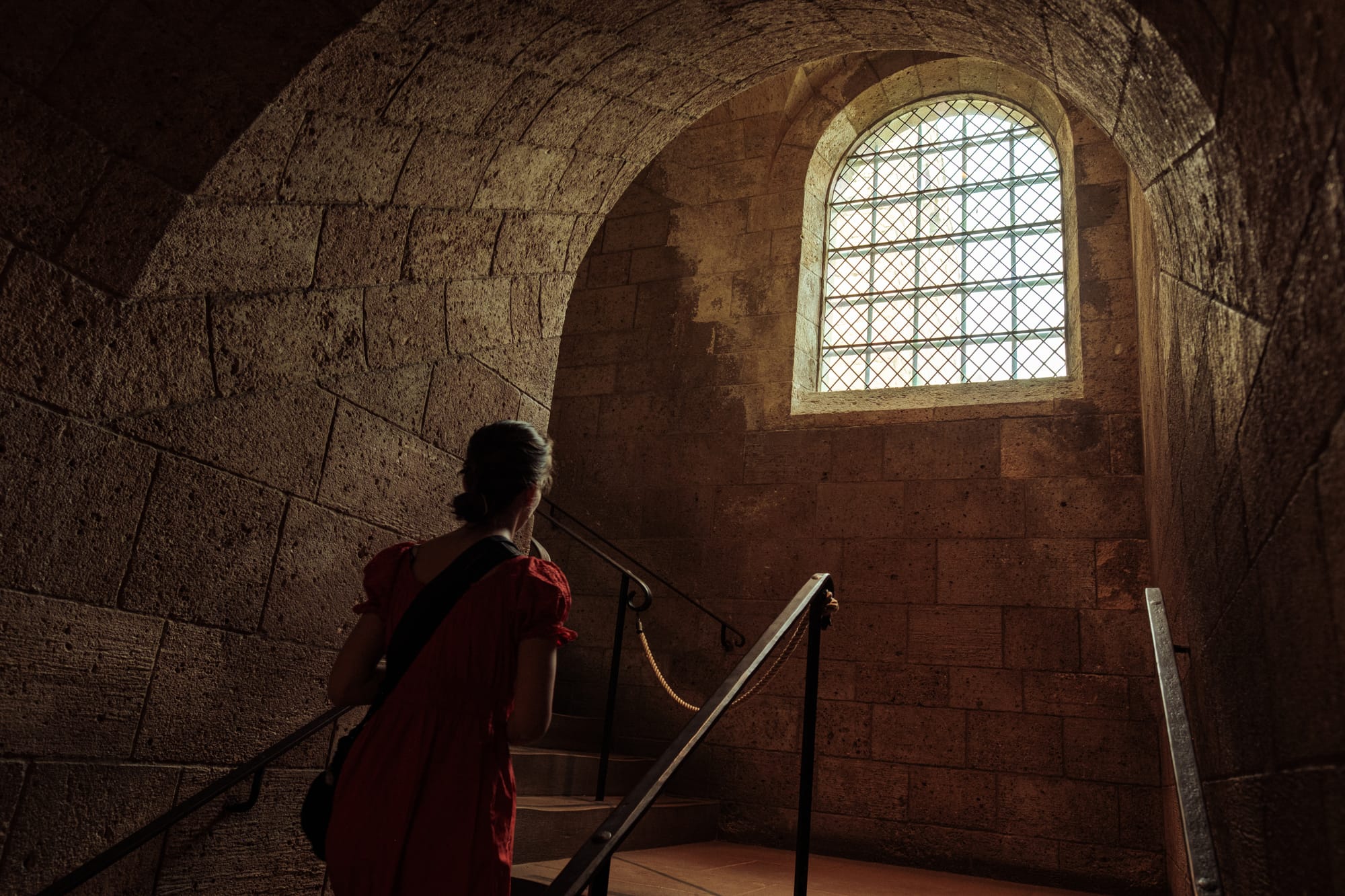
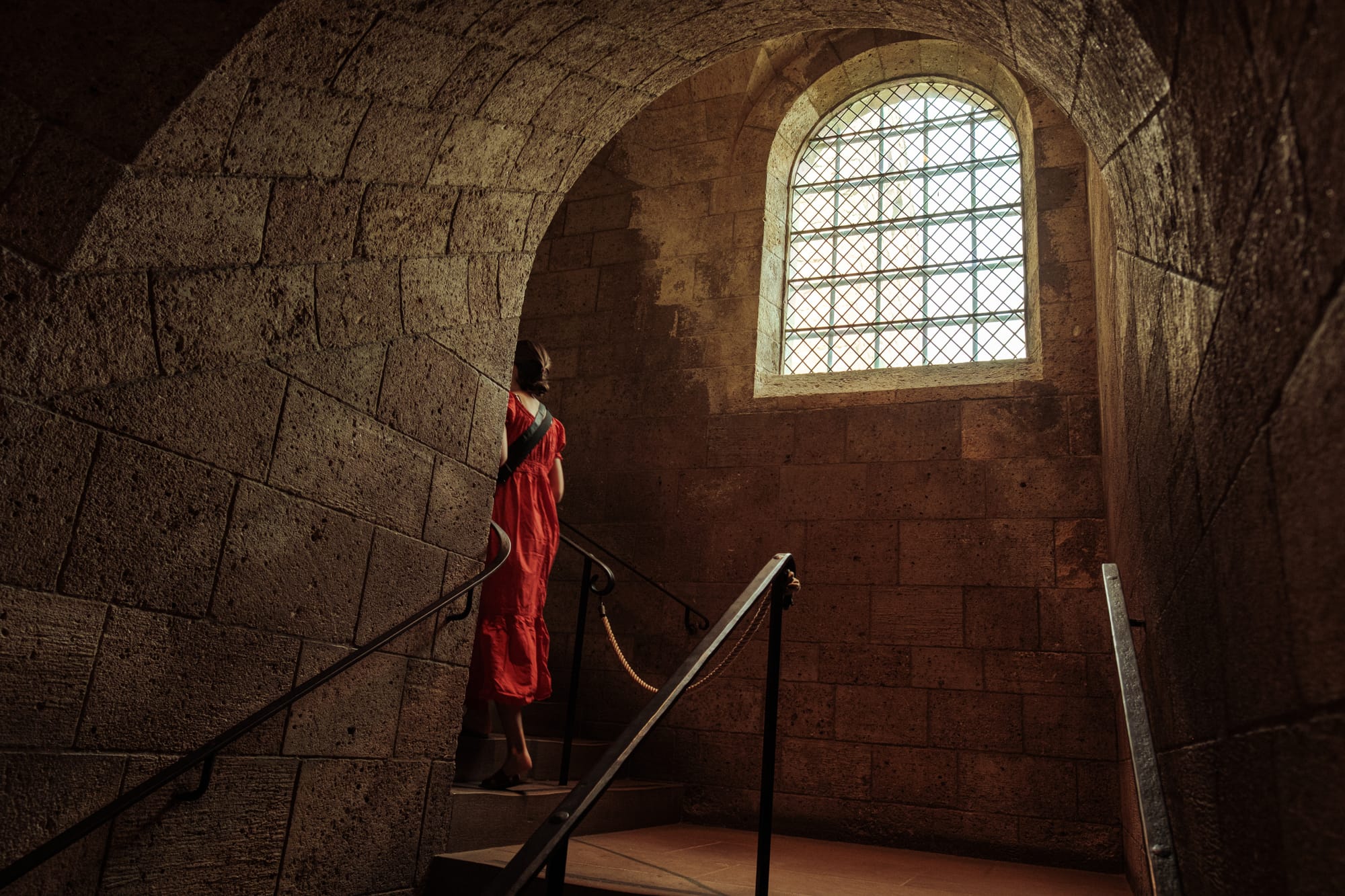


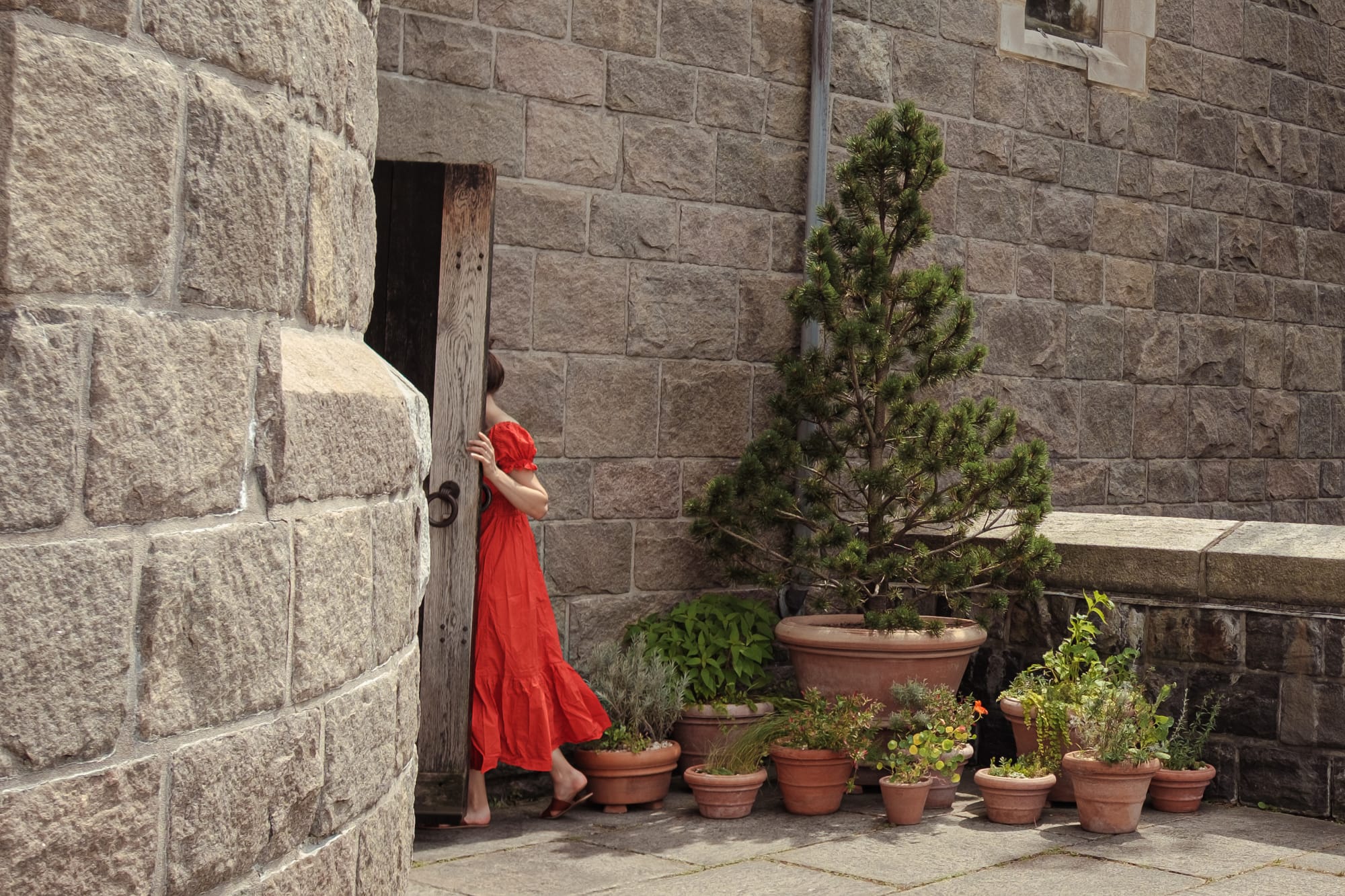
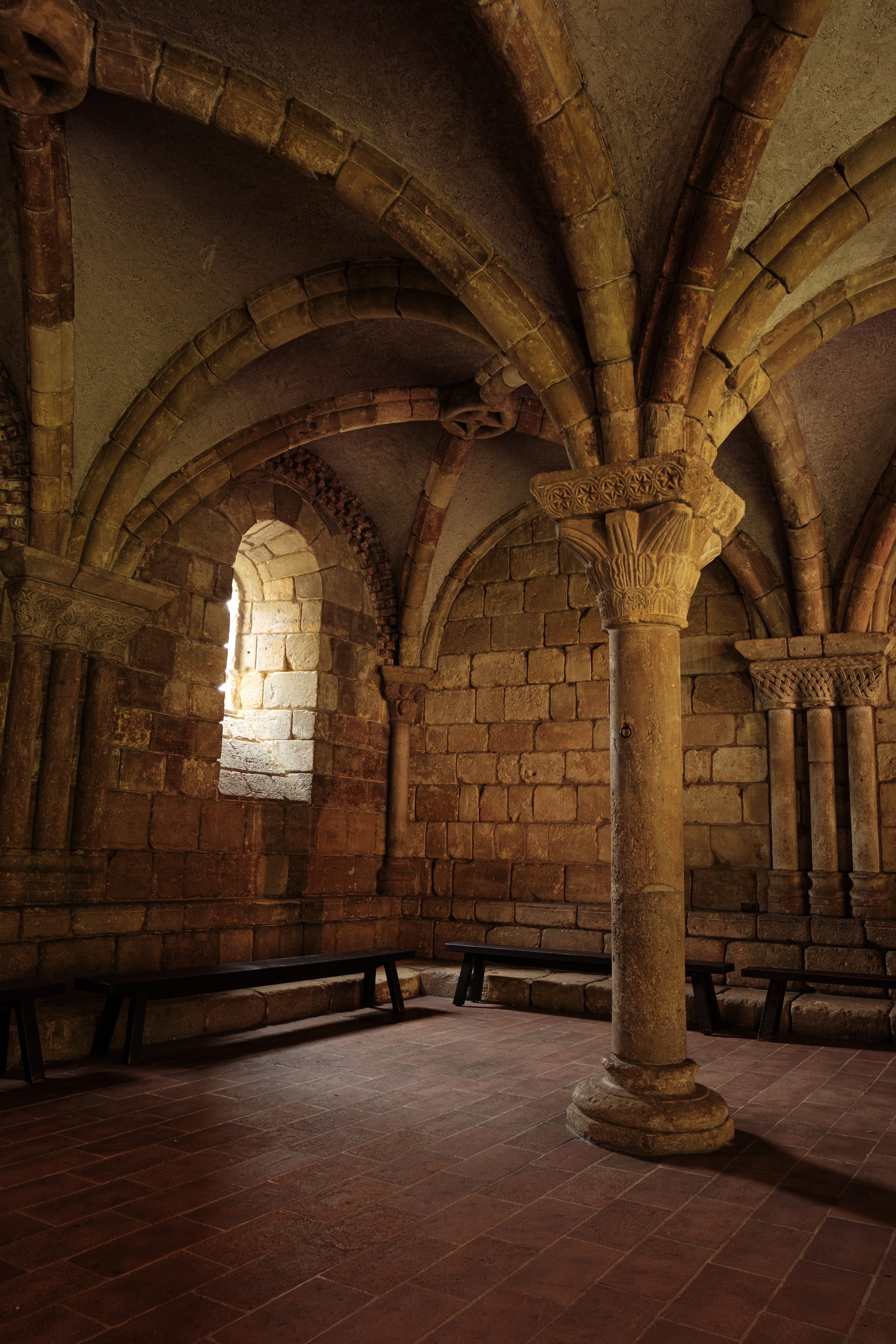

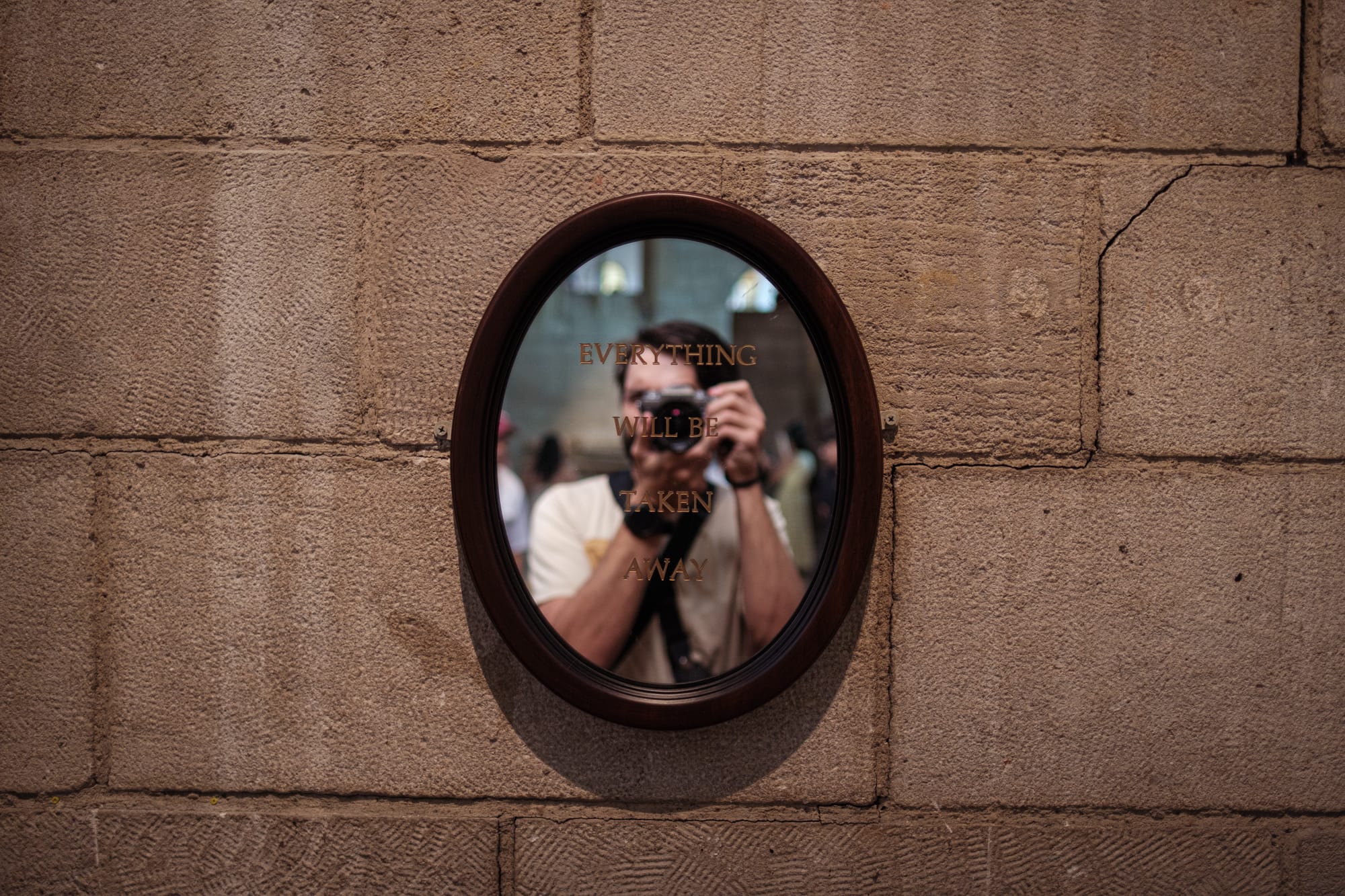
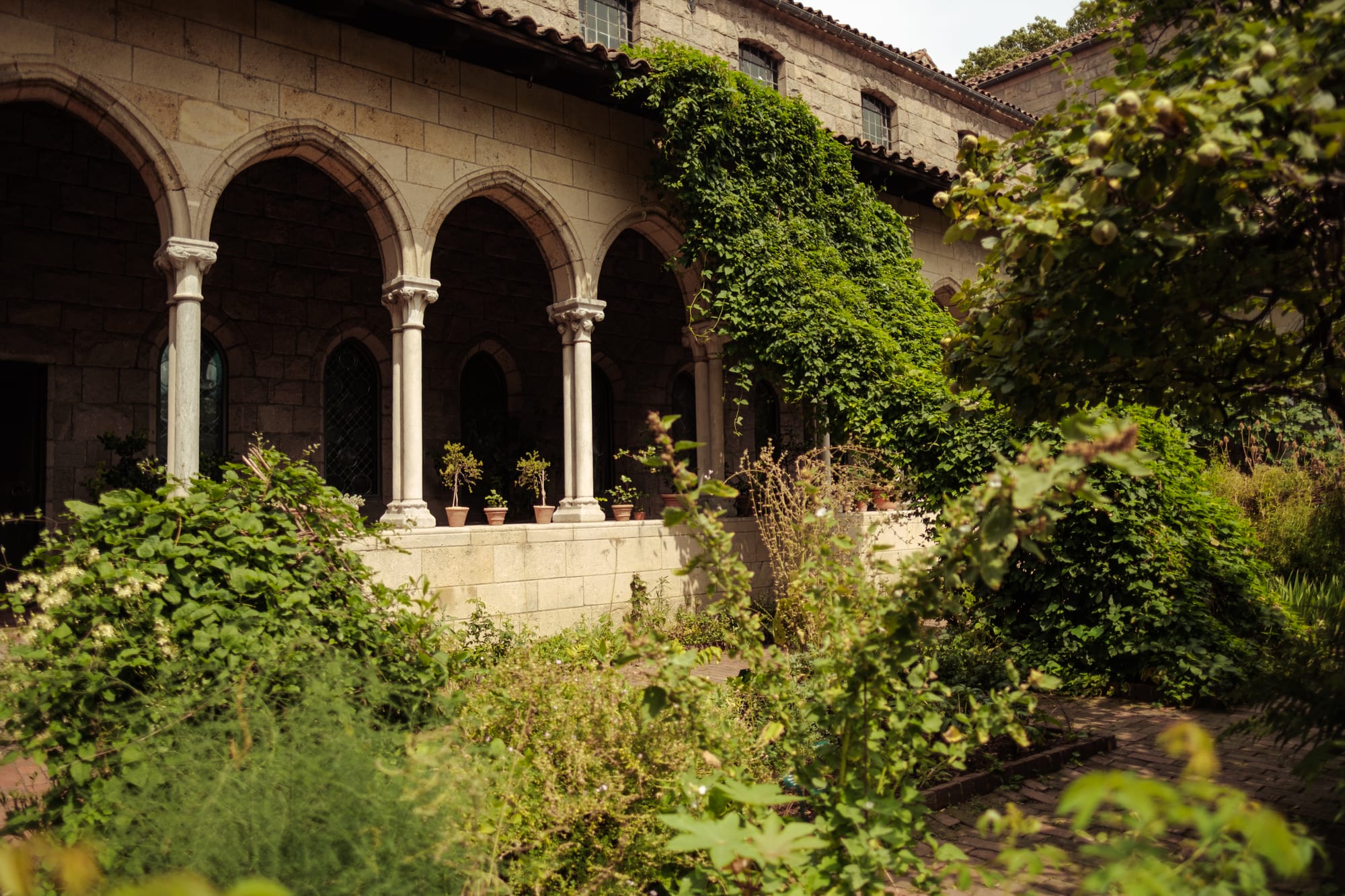
[Gallery: 9 Cloisters images]
Influence and Integration
August: Learning From Others
In this short set, you can see the influence of Greg Girard and Eduardo Ortiz coming through. Smooth contrast with texture and overexposed night scenes from Girard. High contrast between shadows and light, saturated colors from Ortiz. I'm not trying to copy them—I'm learning their visual grammar and seeing how it applies to what I'm observing here.
This is part of developing vision: recognizing whose work resonates, studying how they see, then testing those approaches in your own environment. Influence isn't imitation; it's integration.
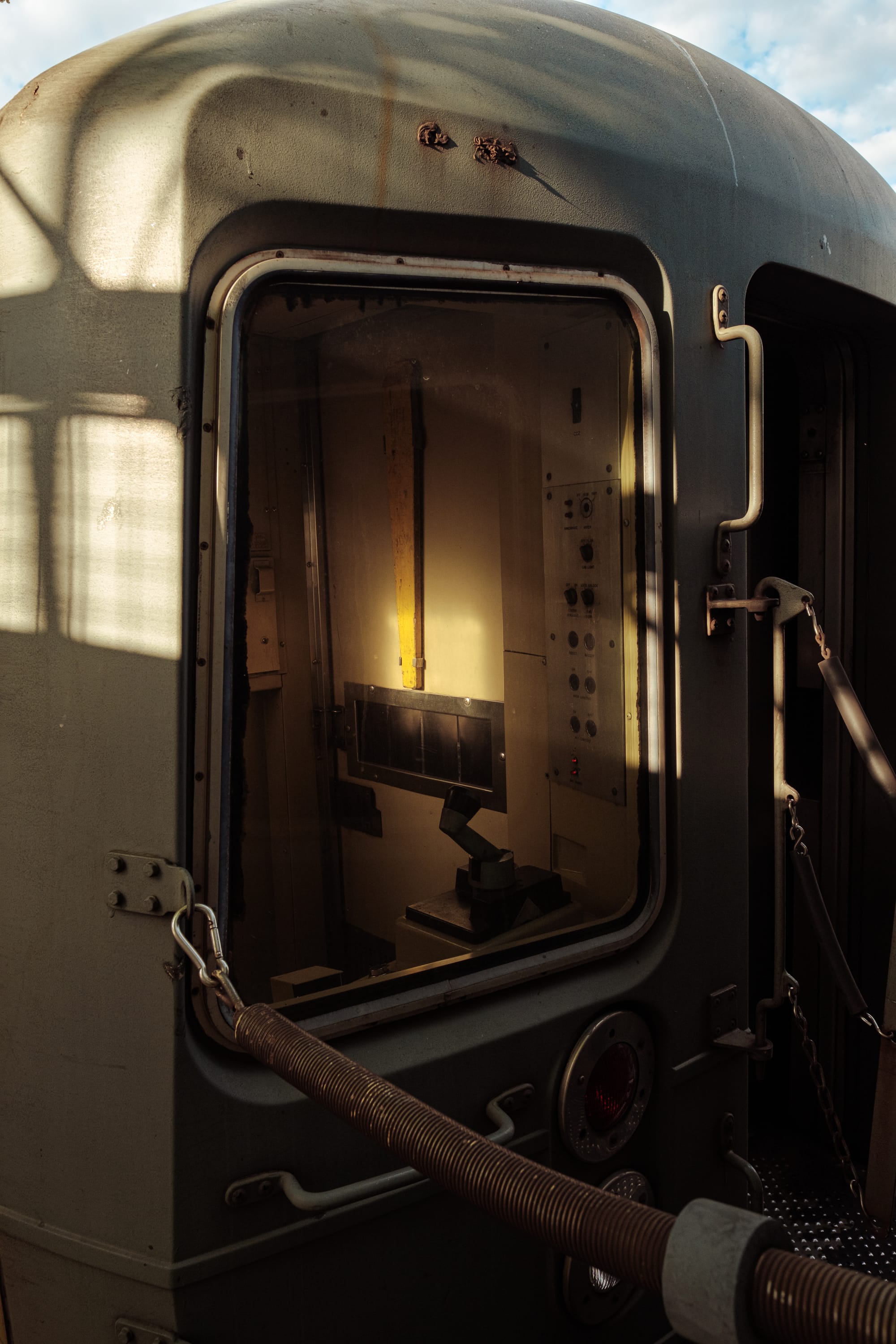
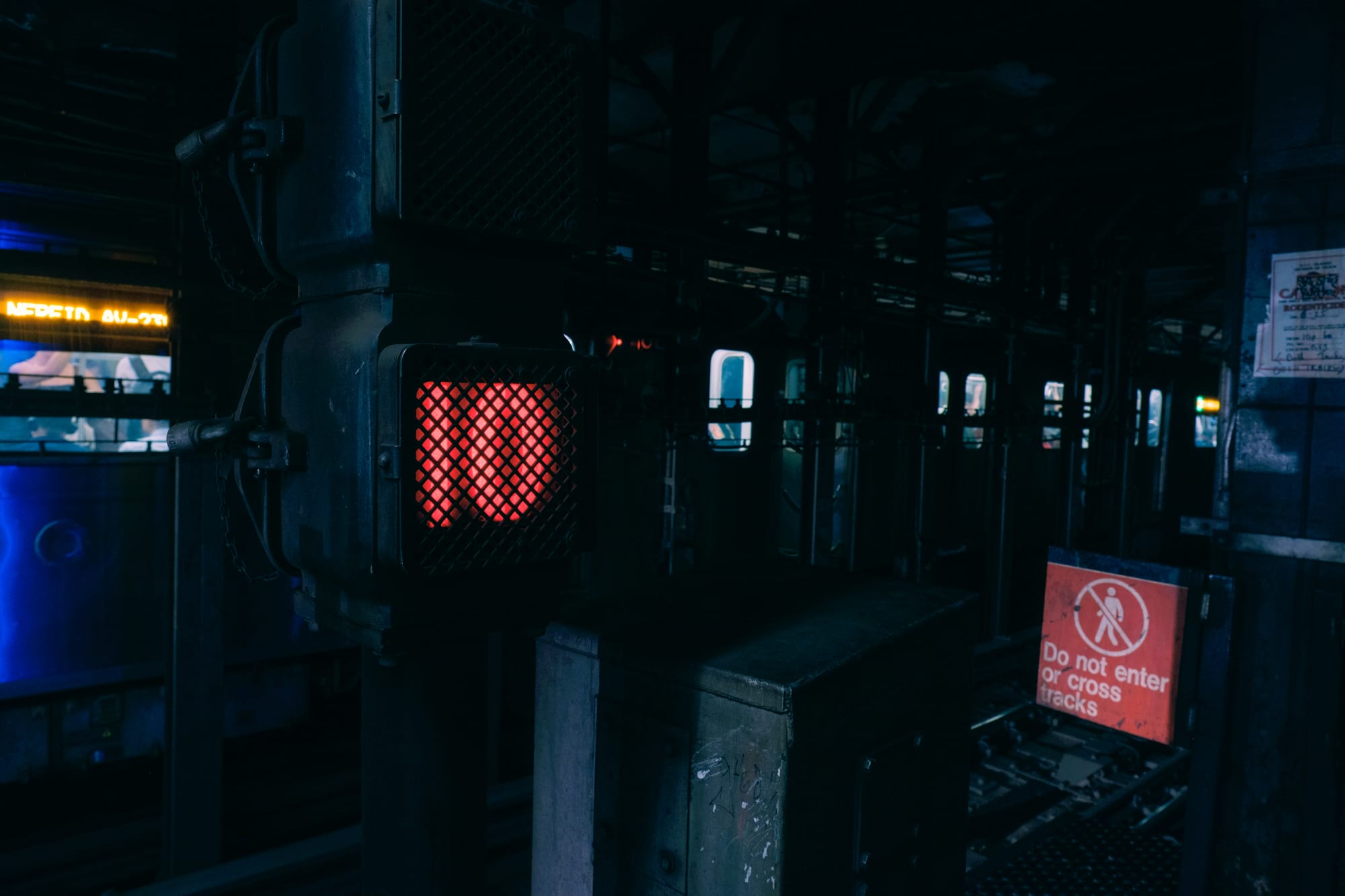
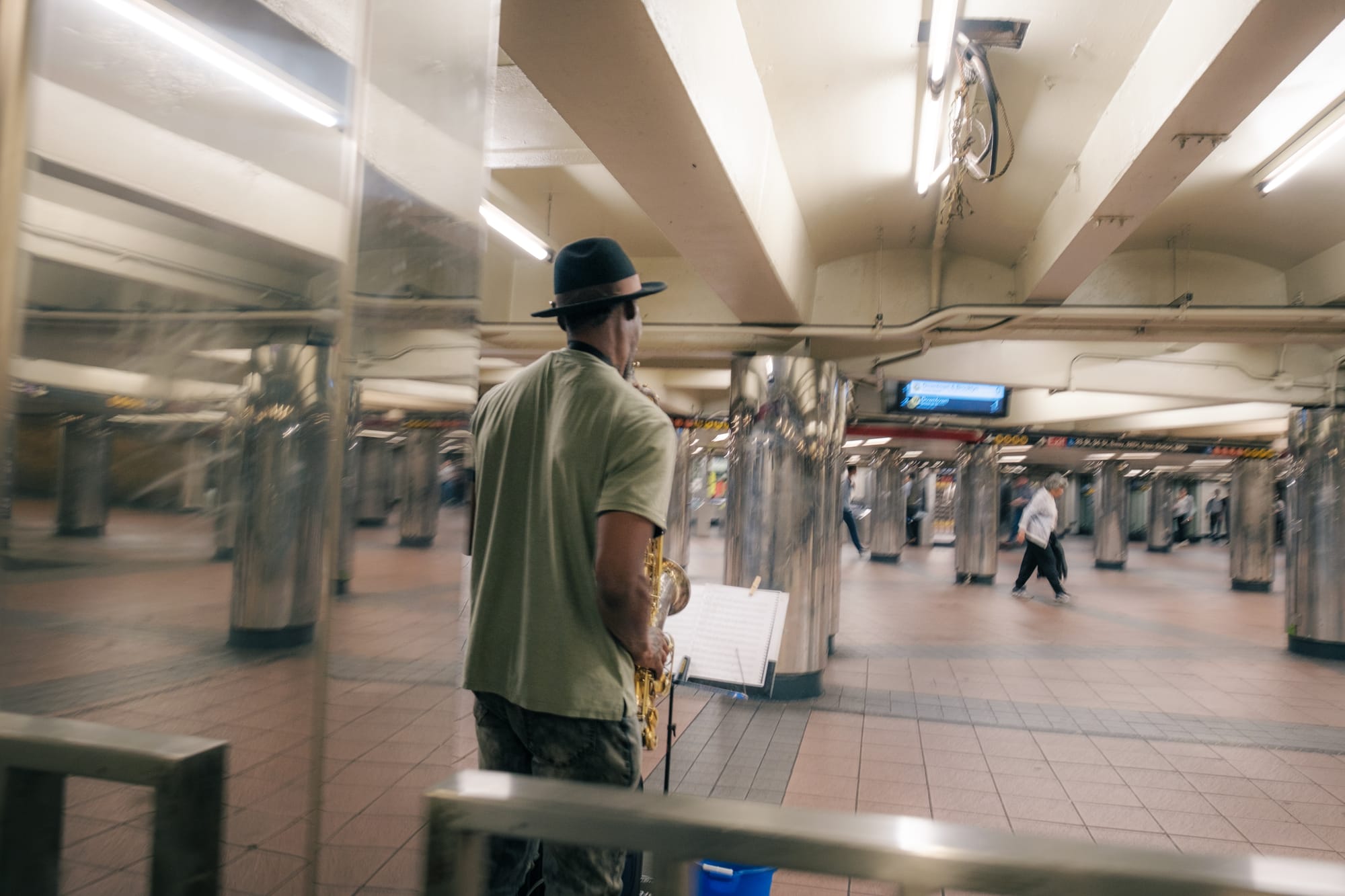

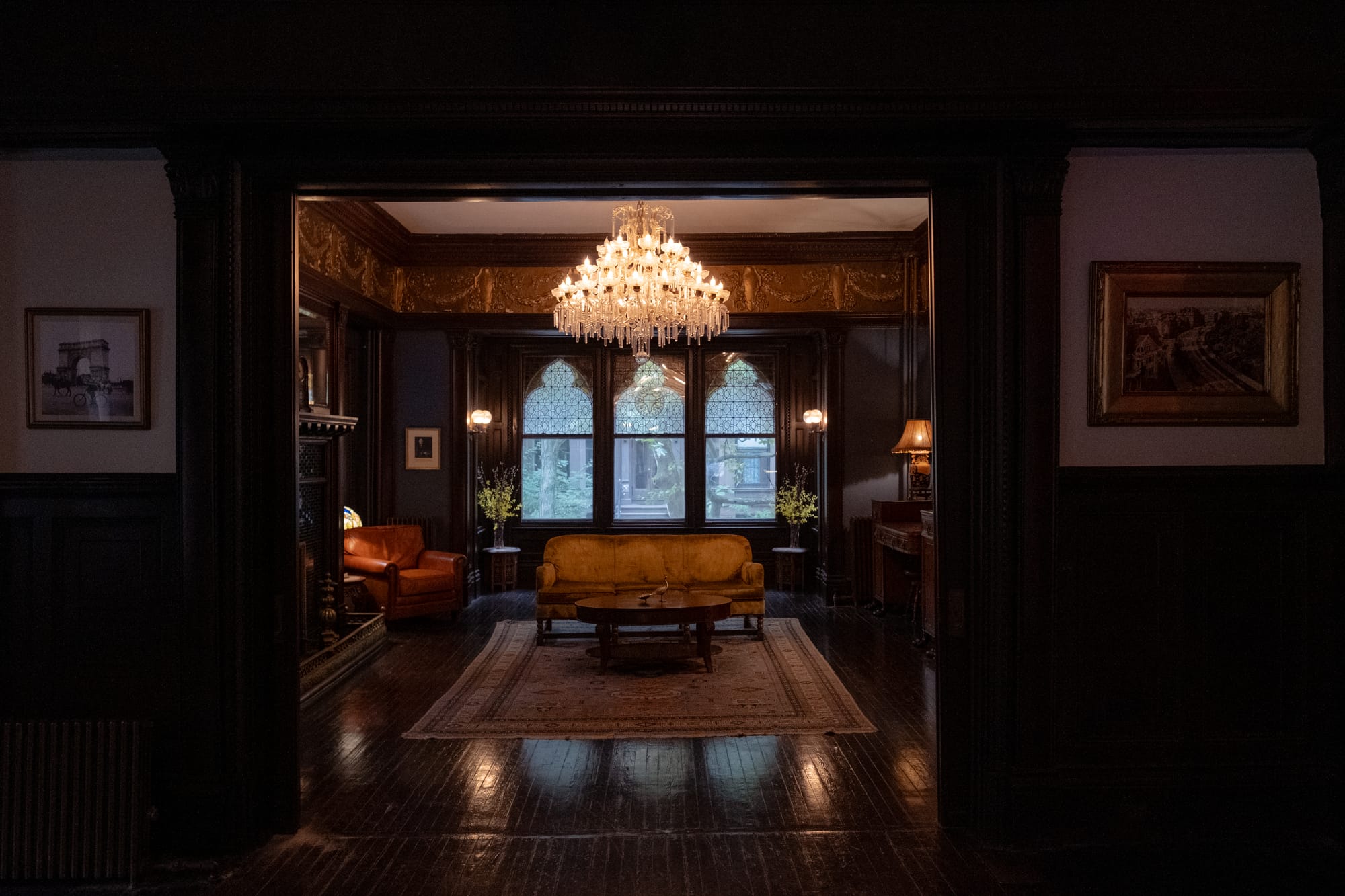
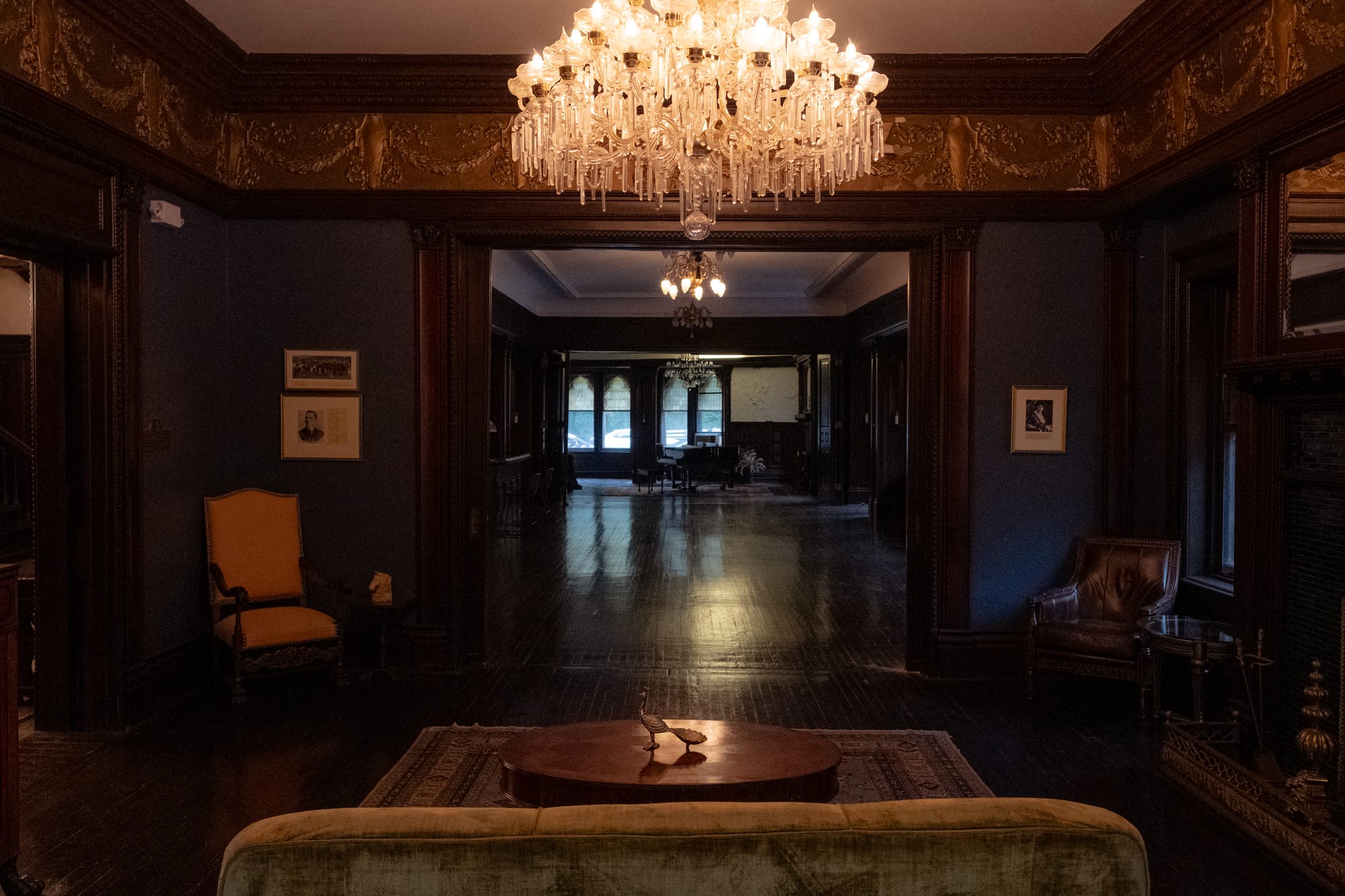
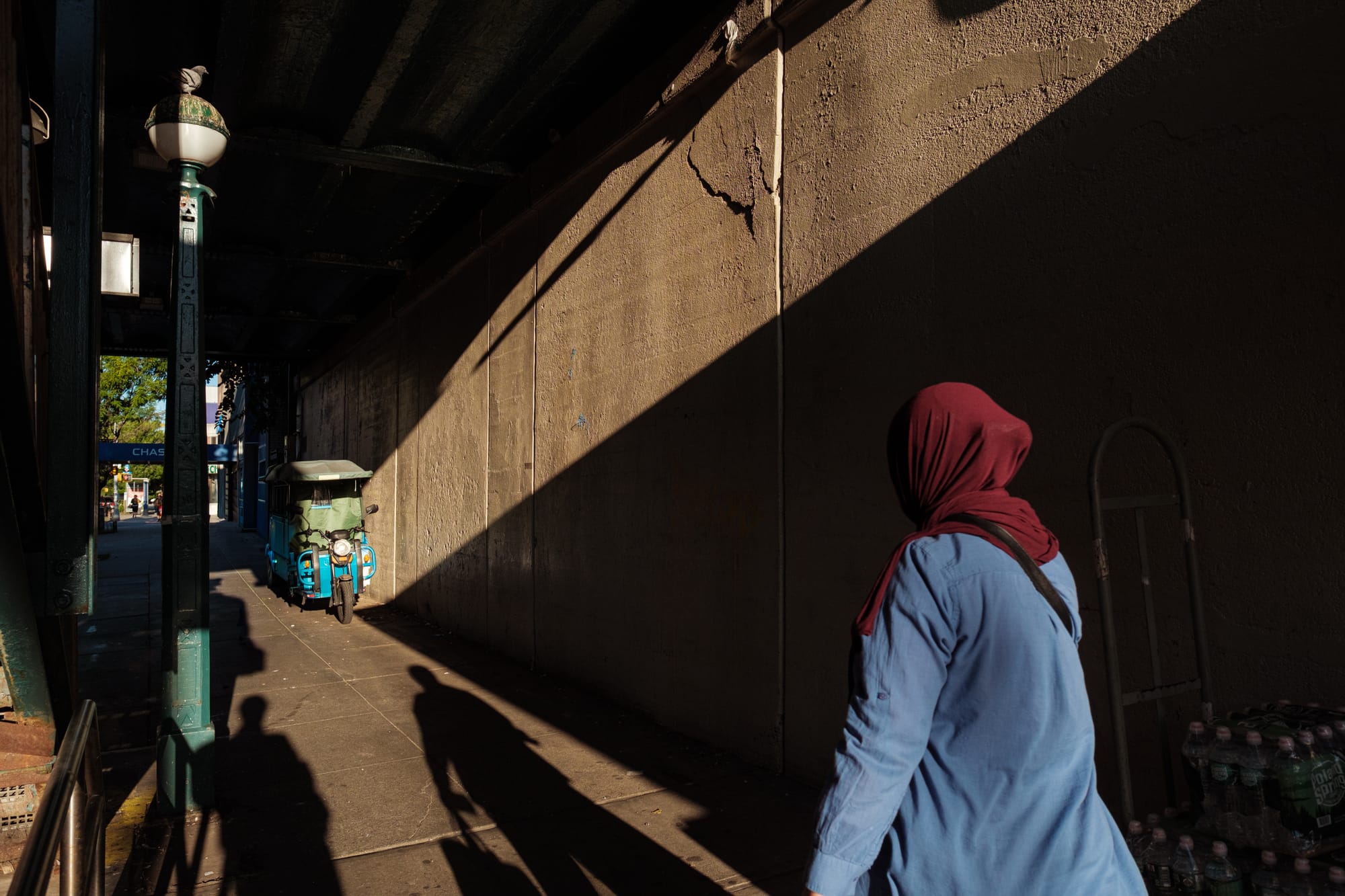
Closing
These three months have been an orientation to working with excess, finding quiet within density, and learning that chaos has its own order if you're patient enough to see it. The city doesn't pause for you to figure it out. But if you show up consistently, carry your camera, and practice seeing redemptively—finding beauty in what others overlook—the work reveals itself.
Not every image needs to resolve into clear understanding. Not every technique needs a name yet. Some of this work is still searching, still asking questions I can't fully articulate. That's part of the process—trusting that meaning emerges through sustained attention, that breakthrough follows struggle, that the work teaches you what it needs to become.
This is just the beginning. More discoveries ahead.
From the Edge,
Zack
